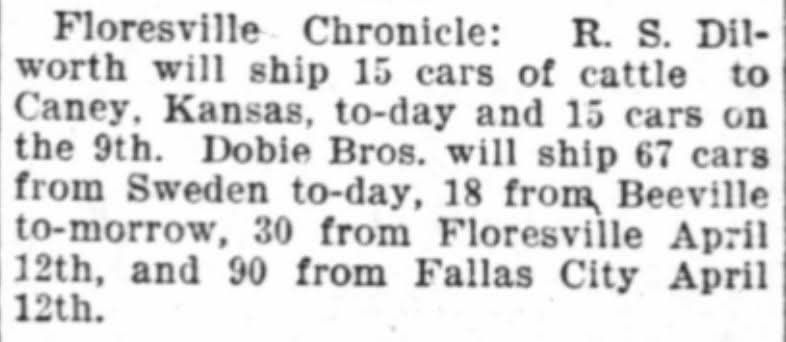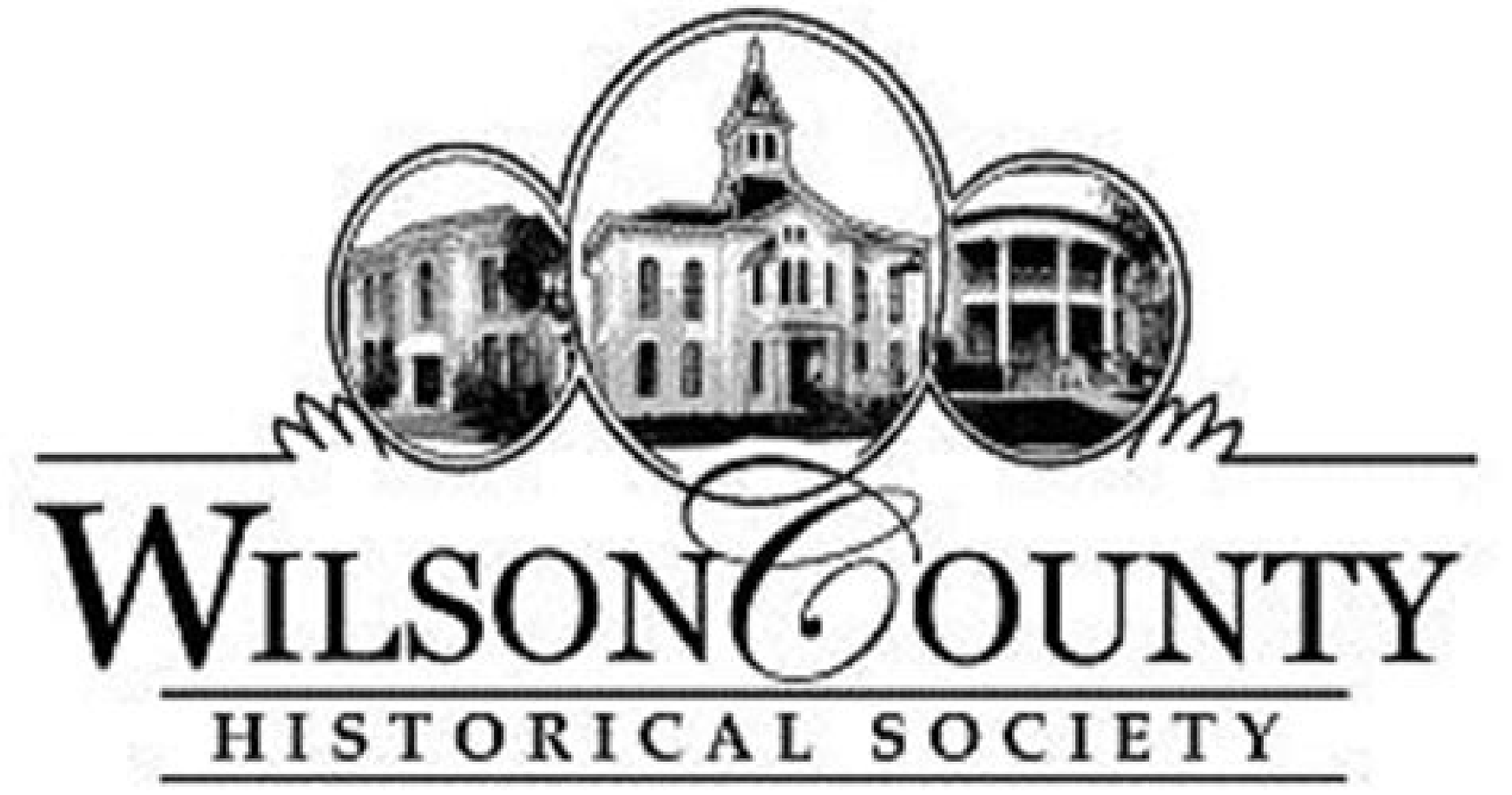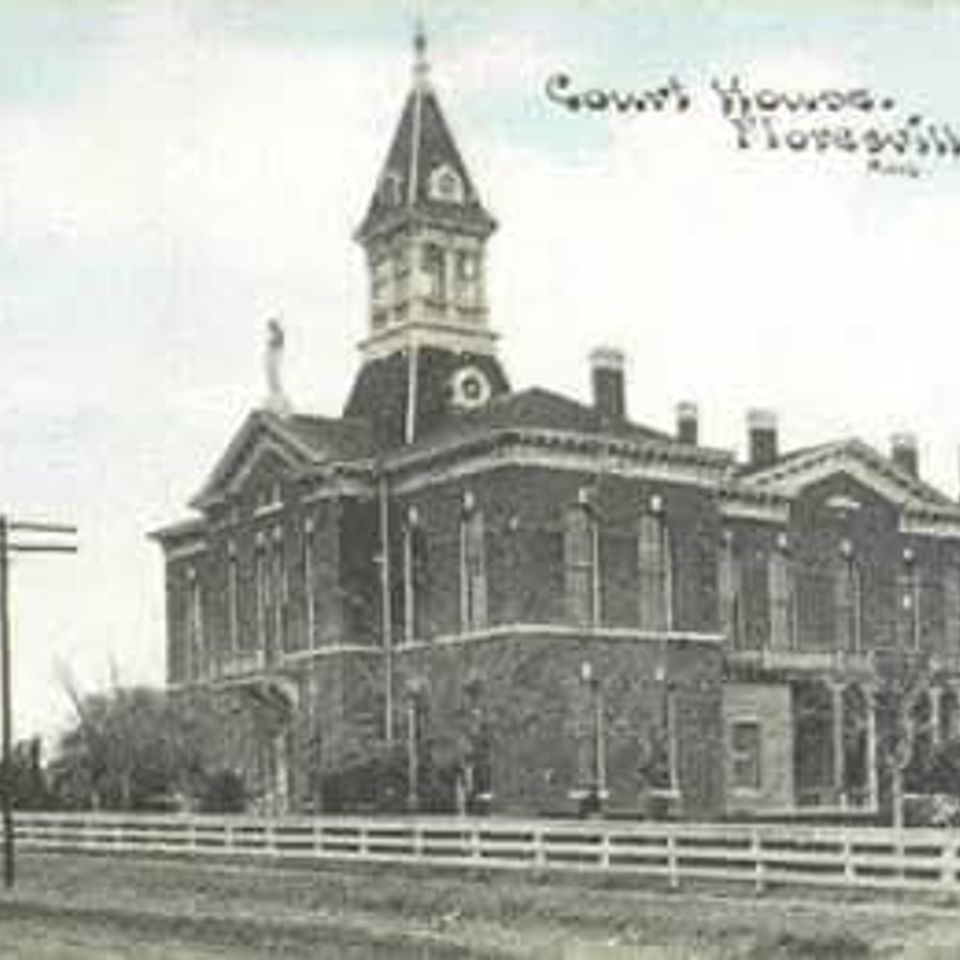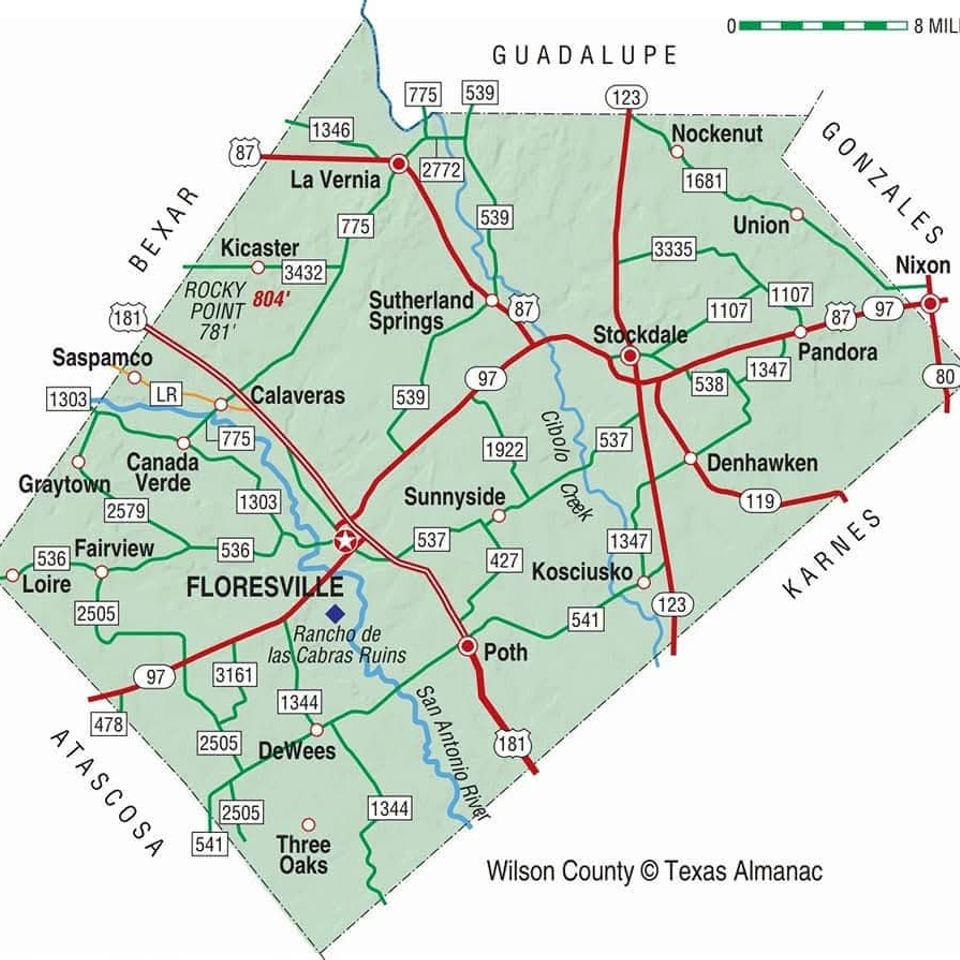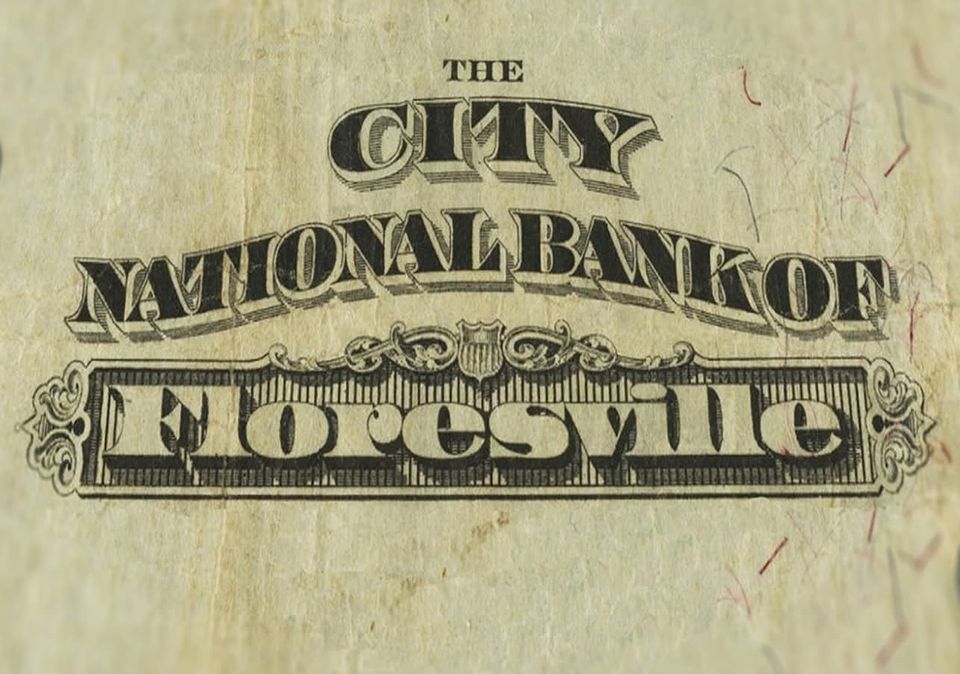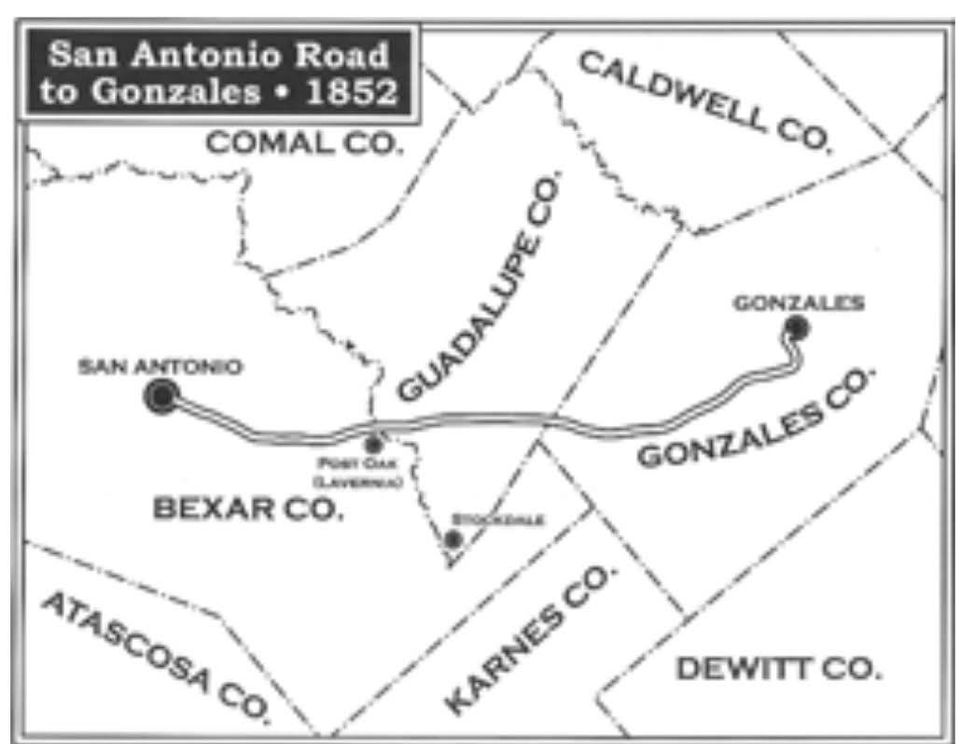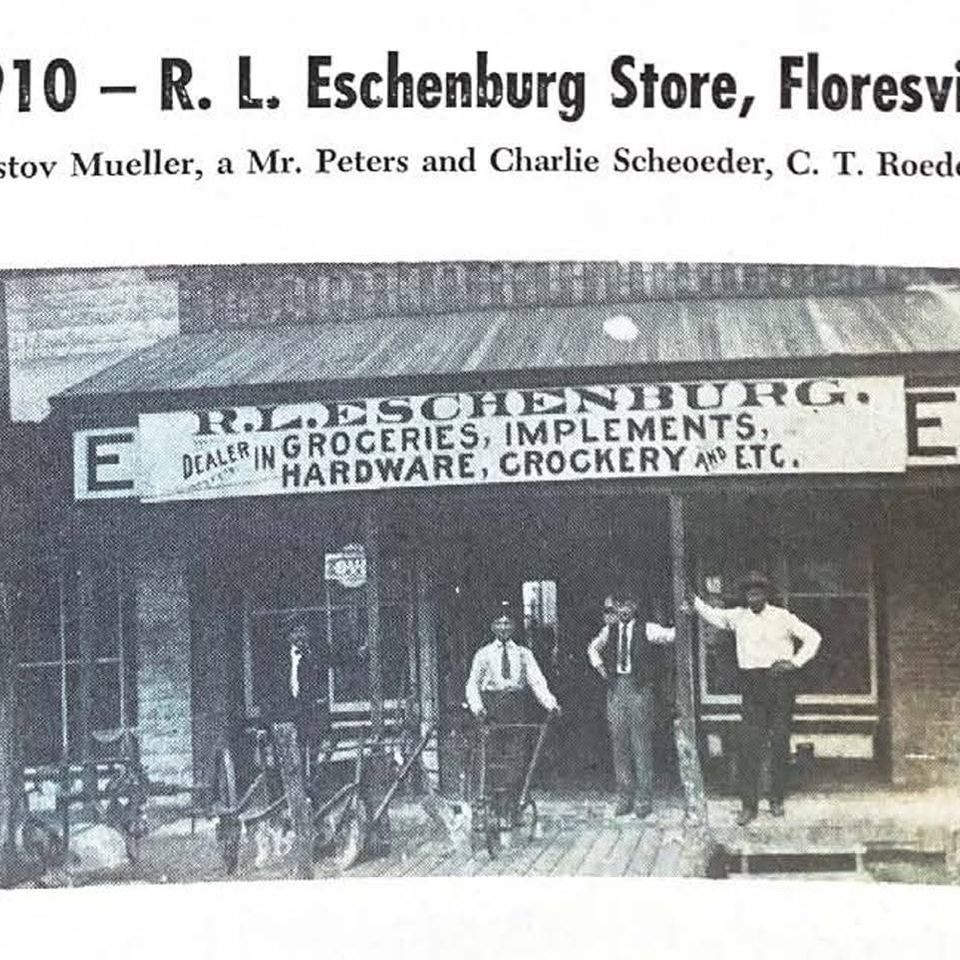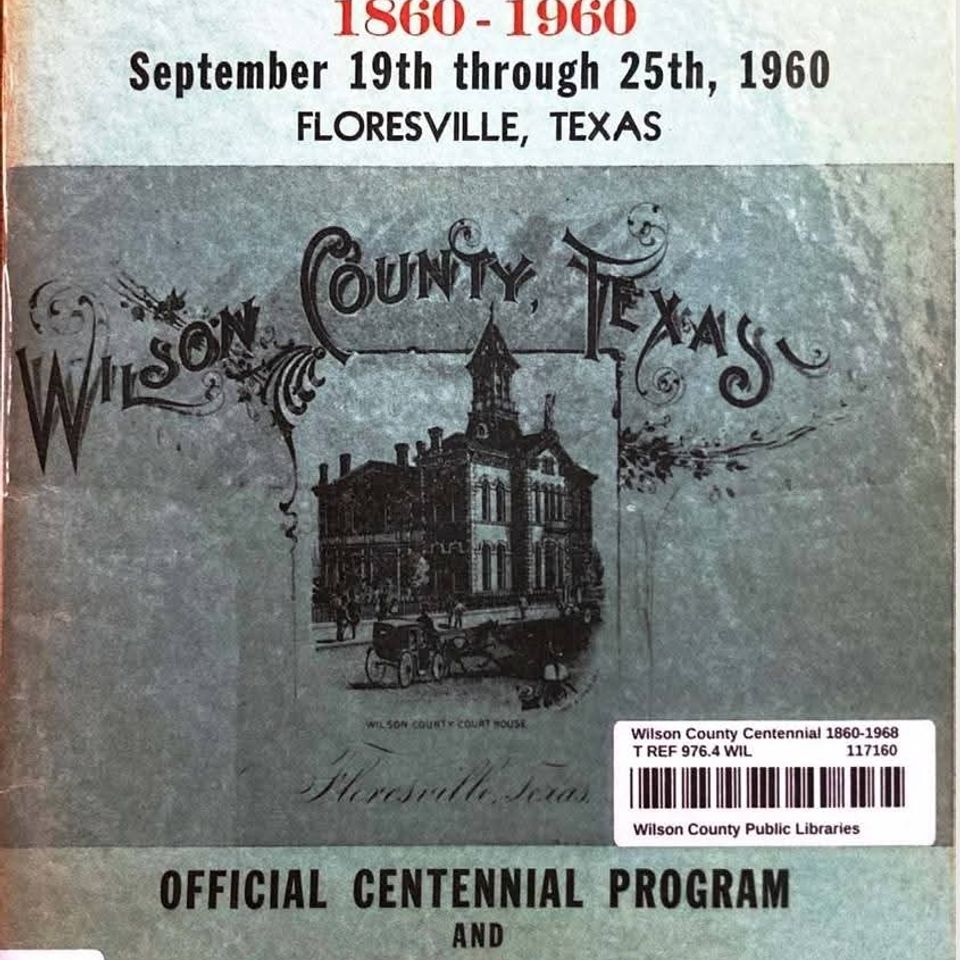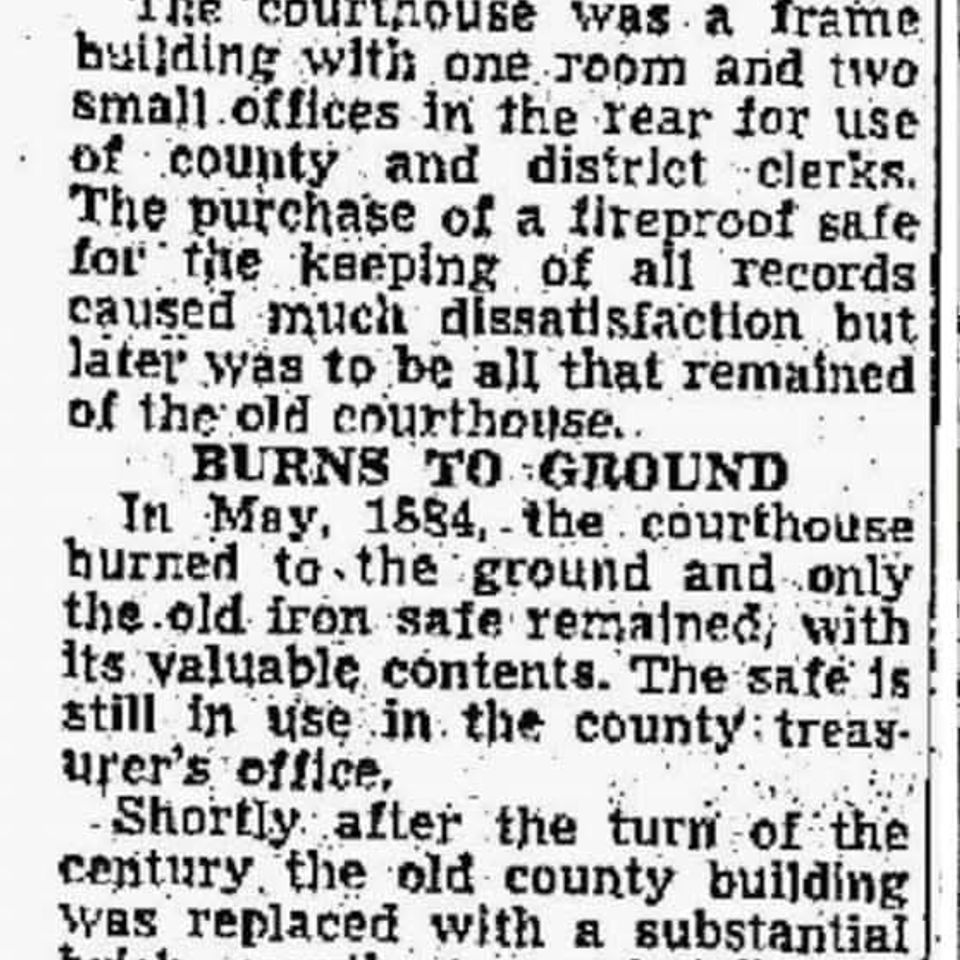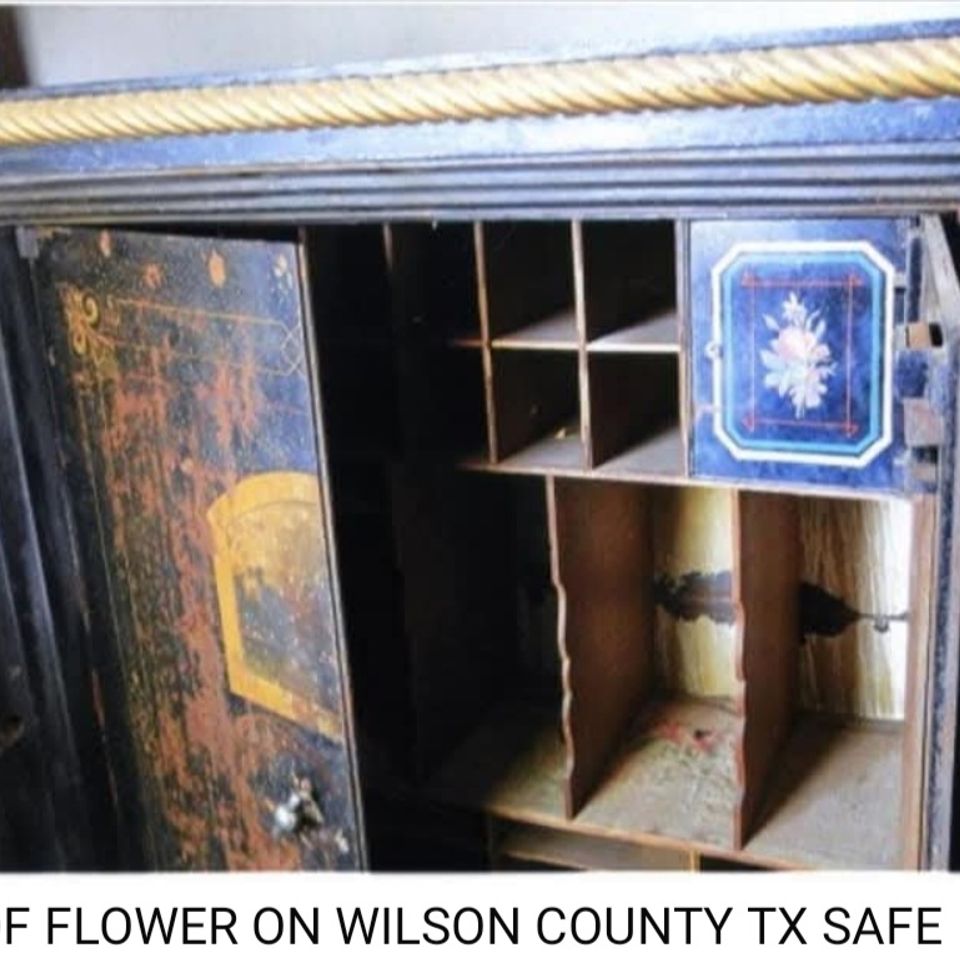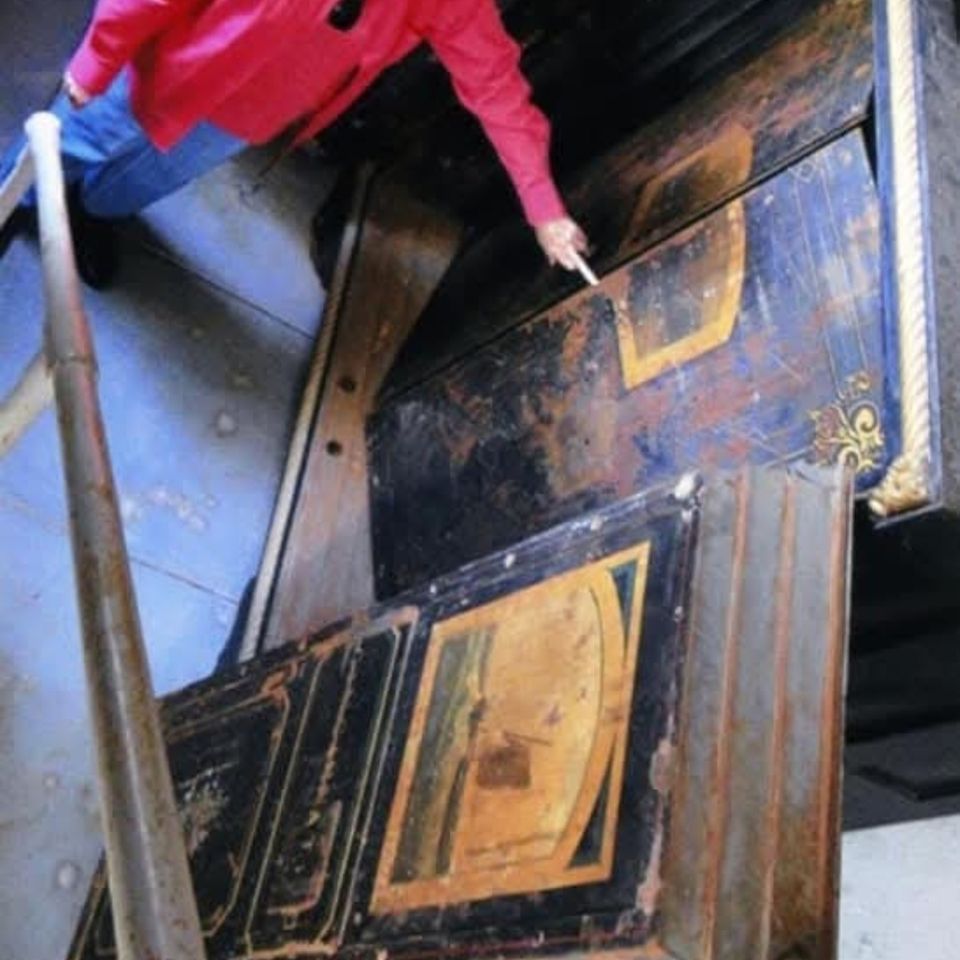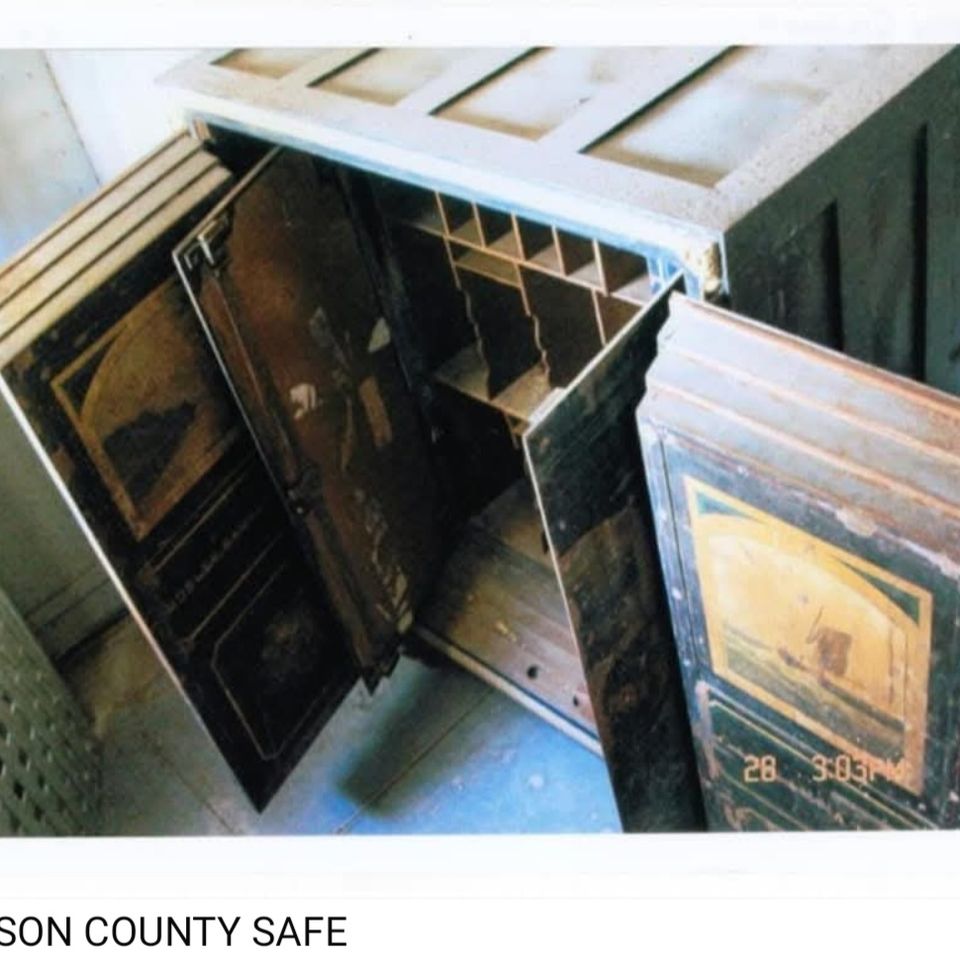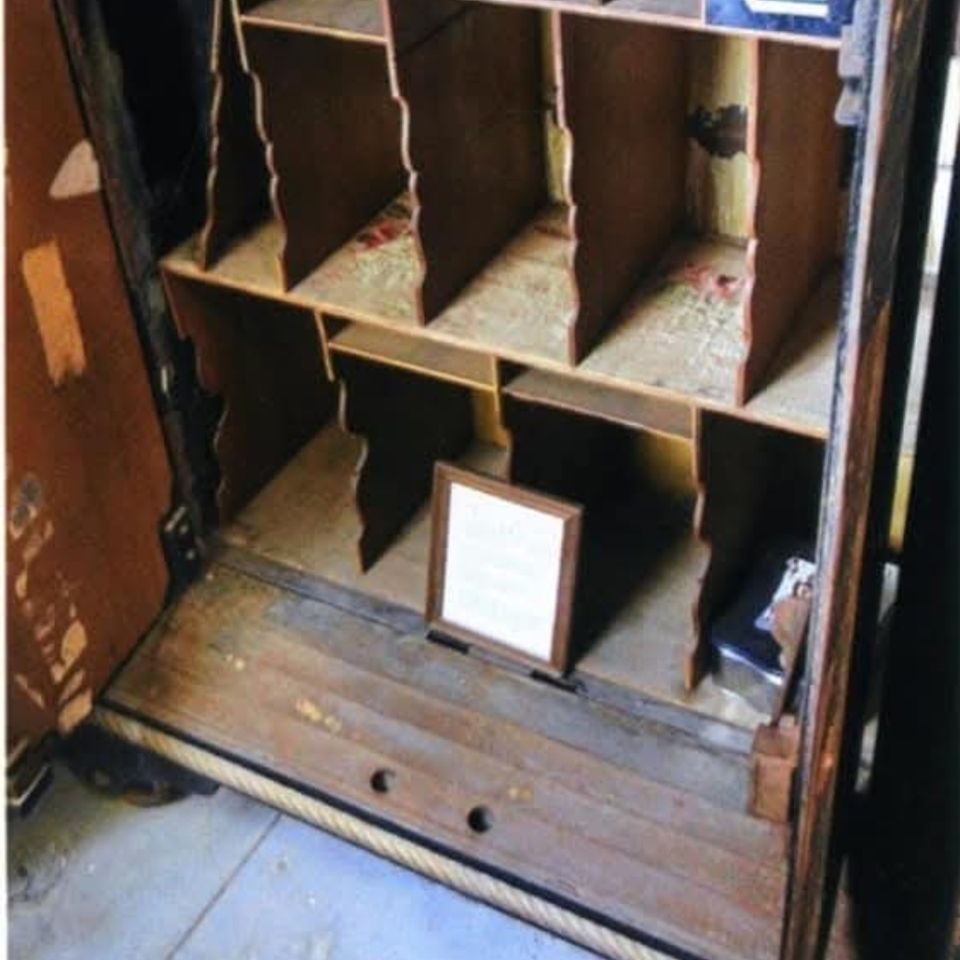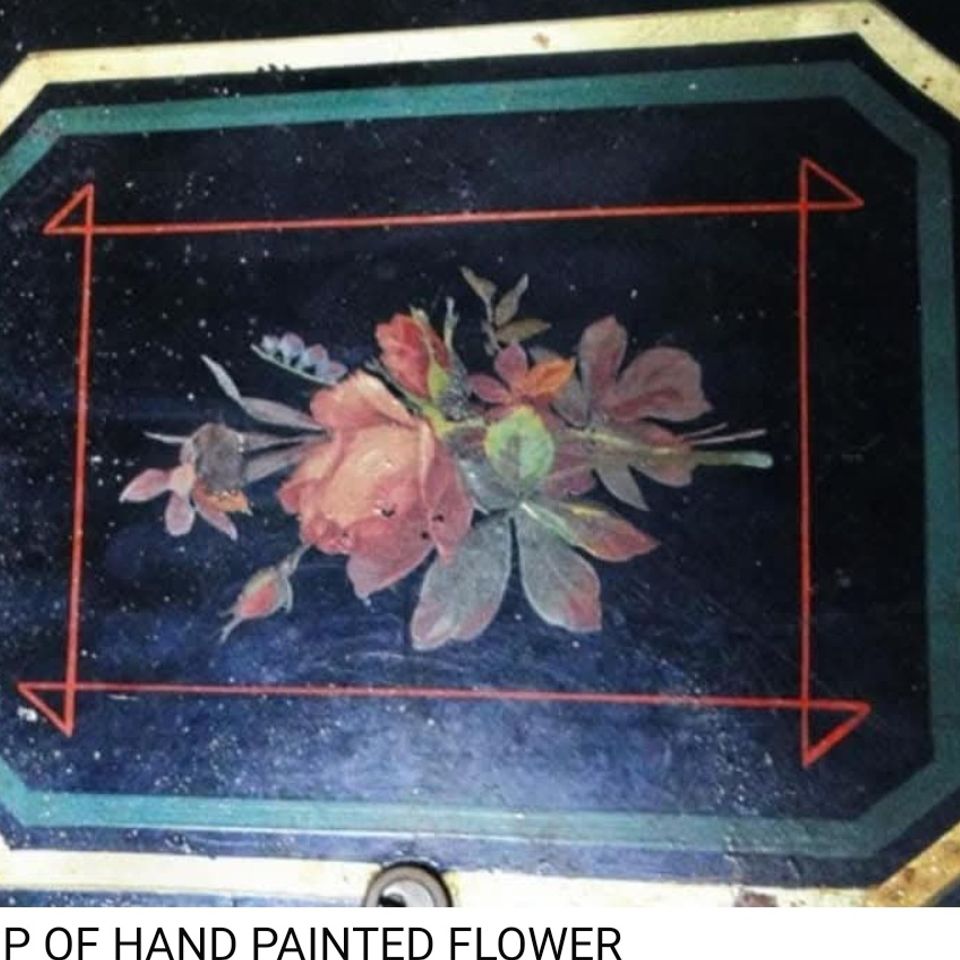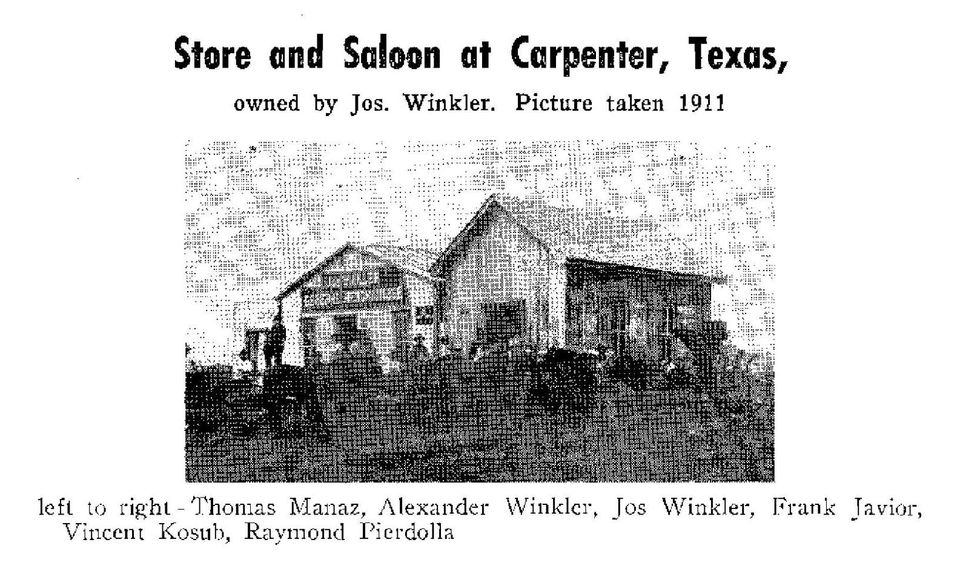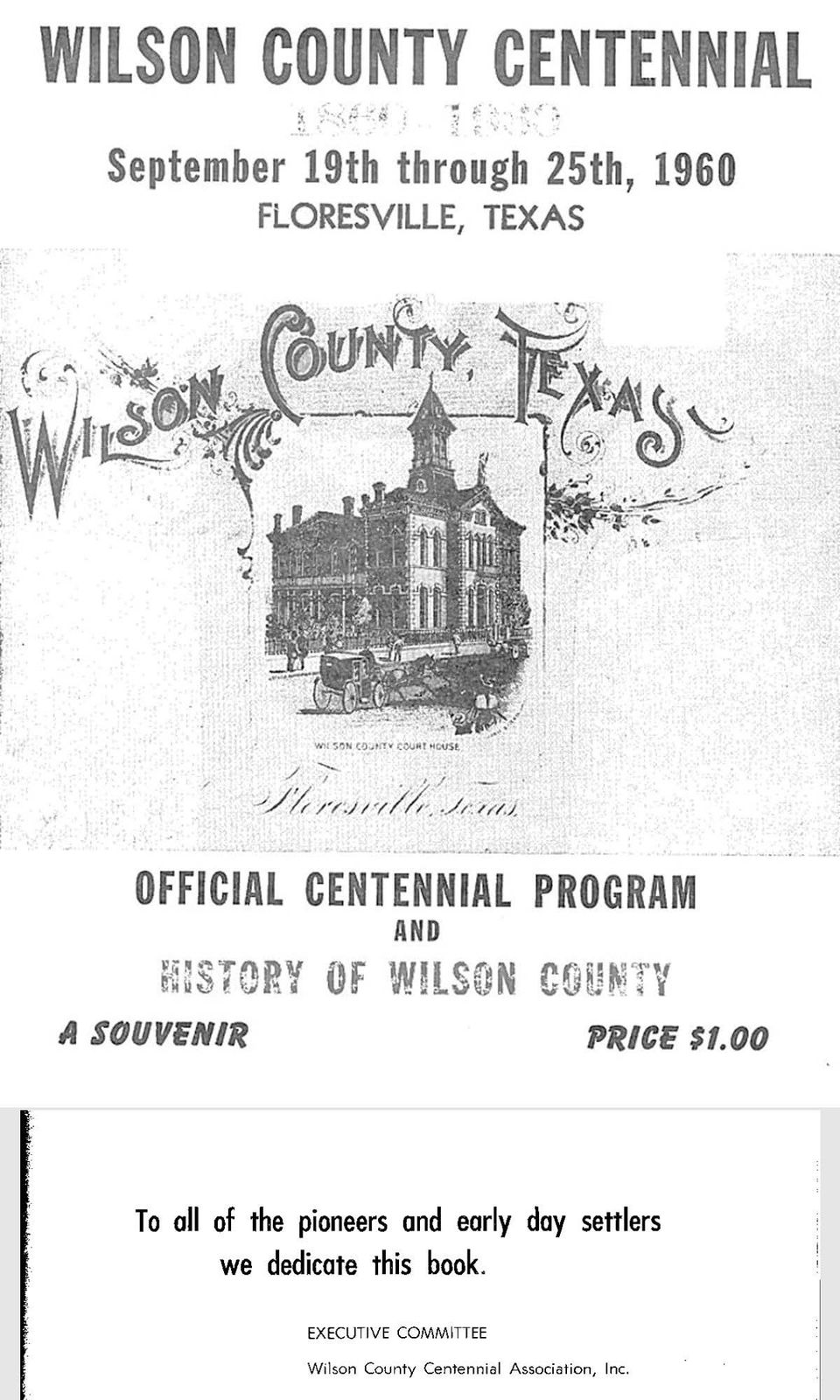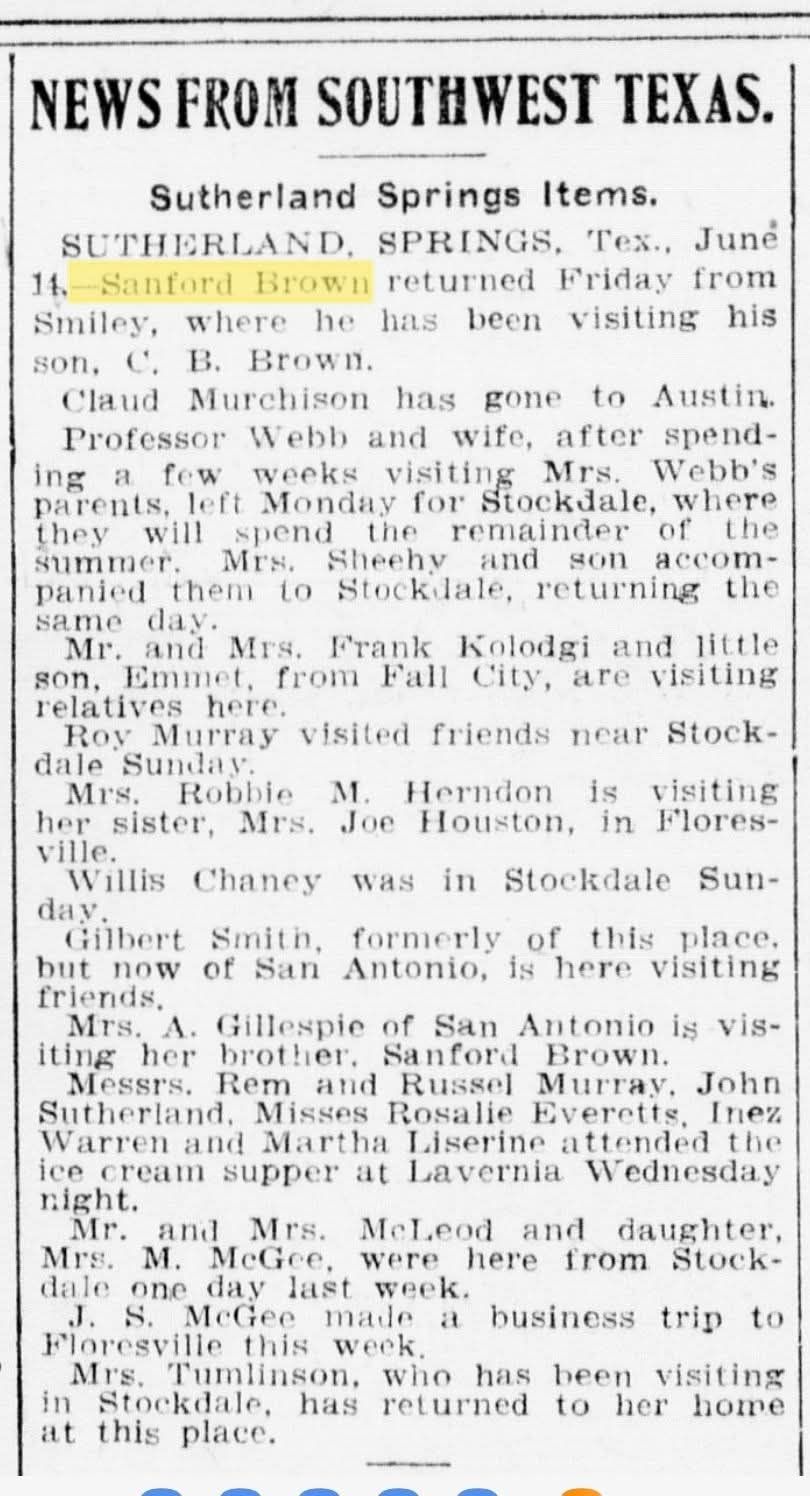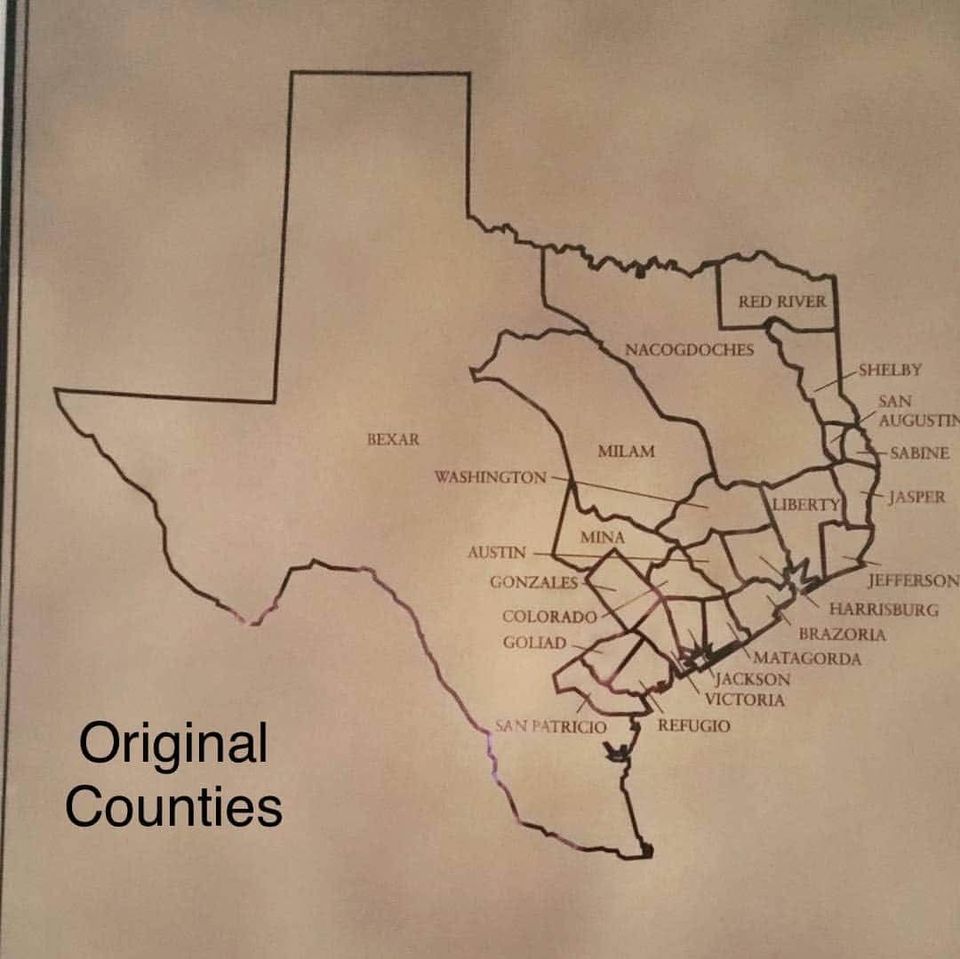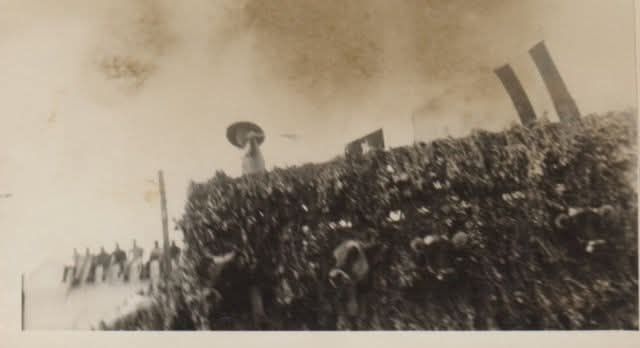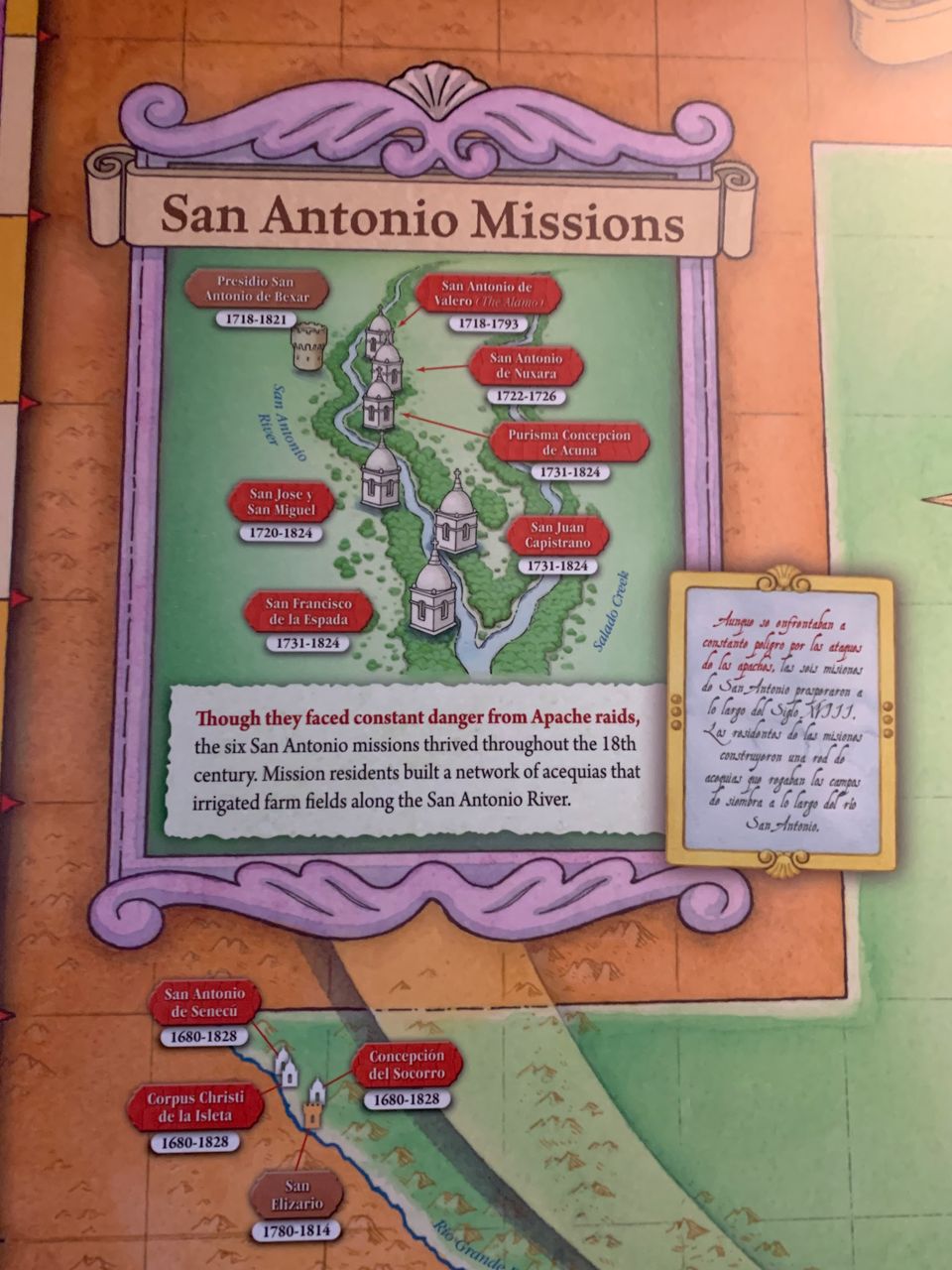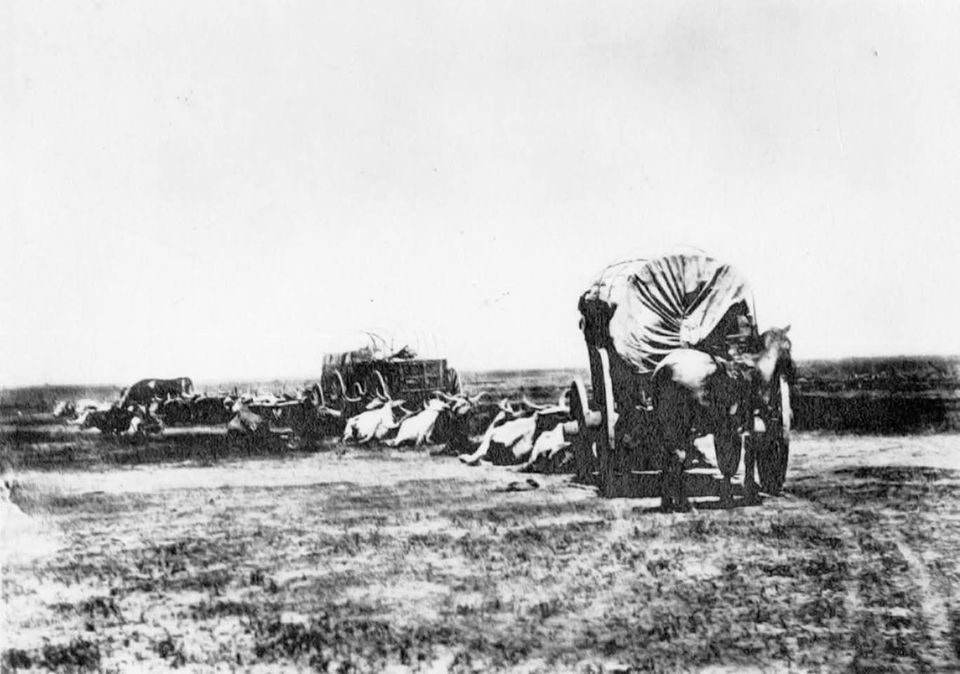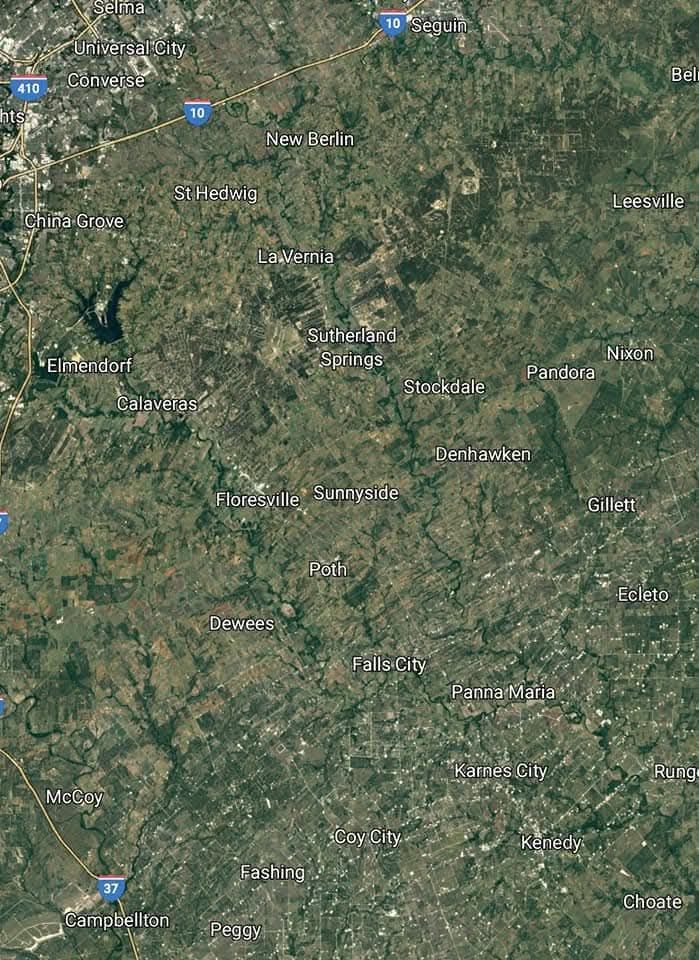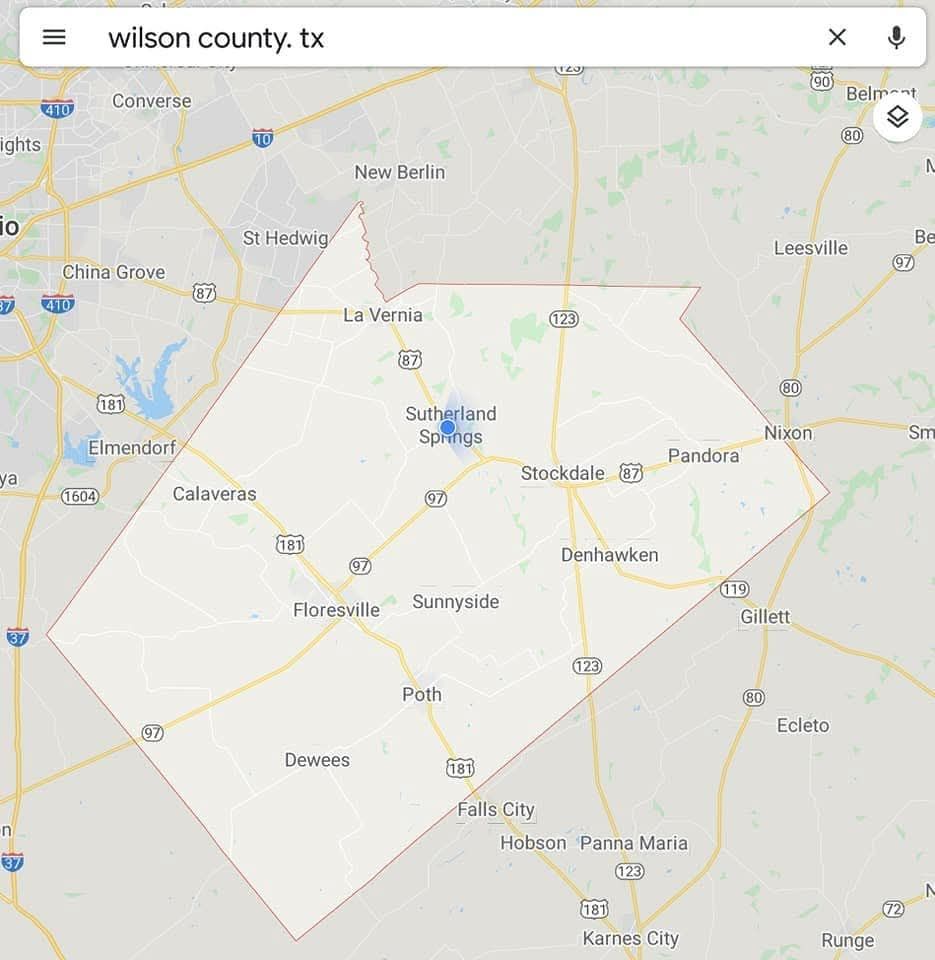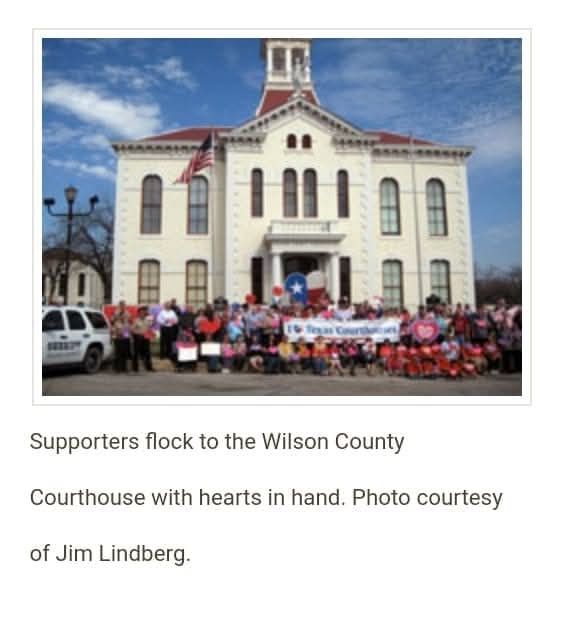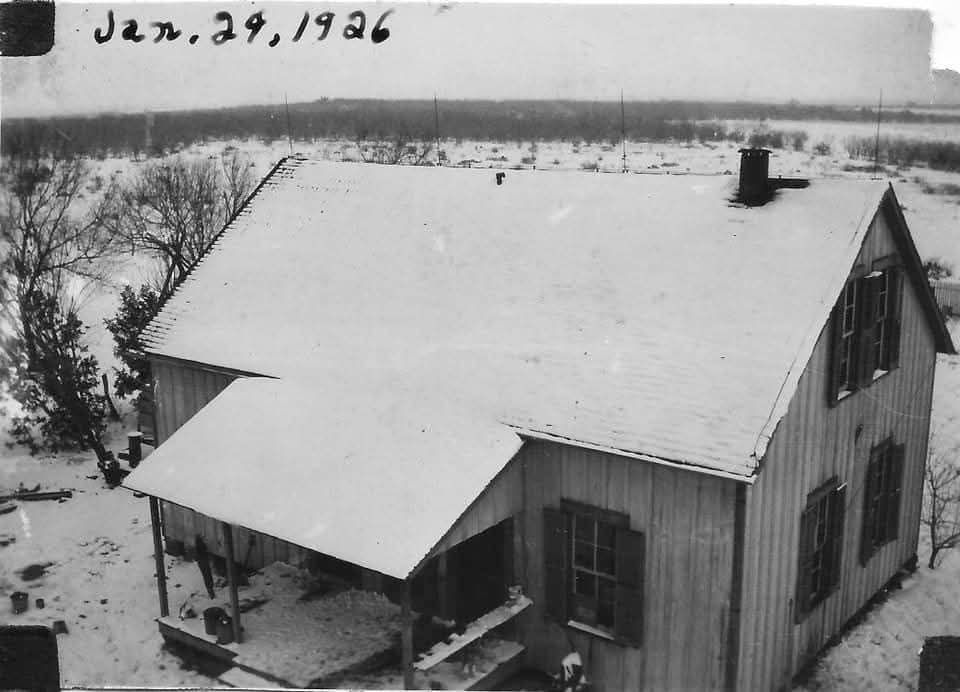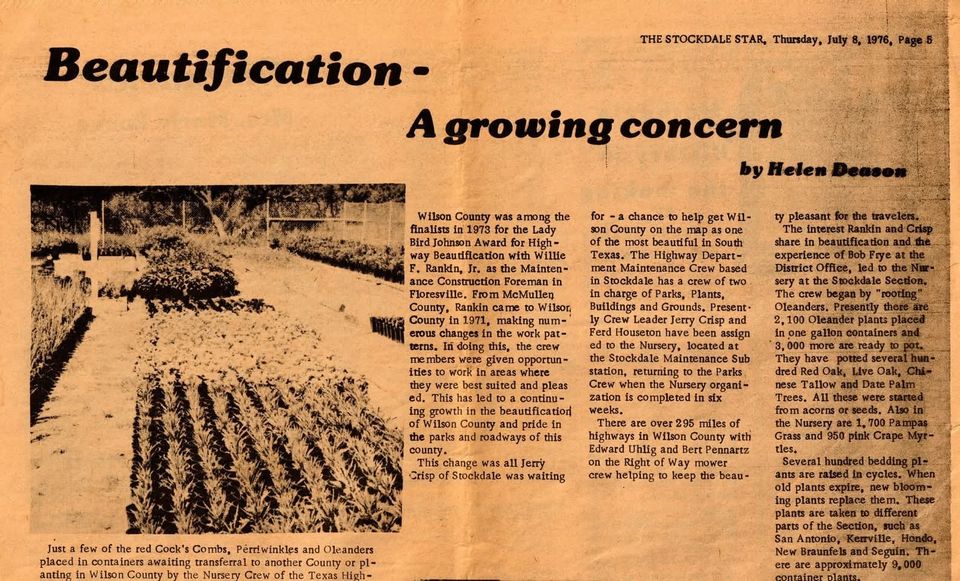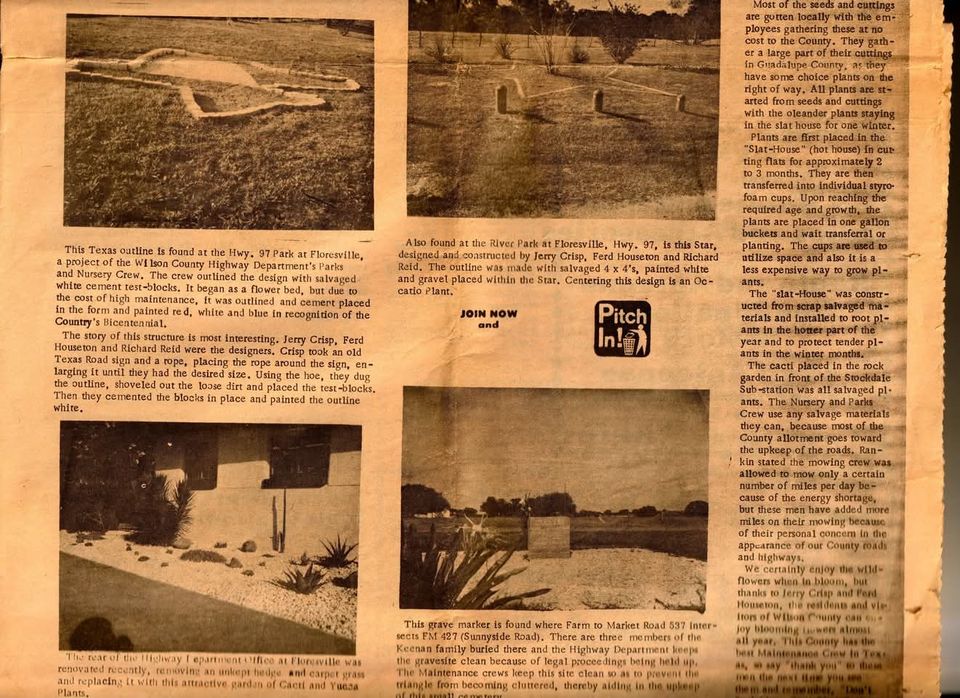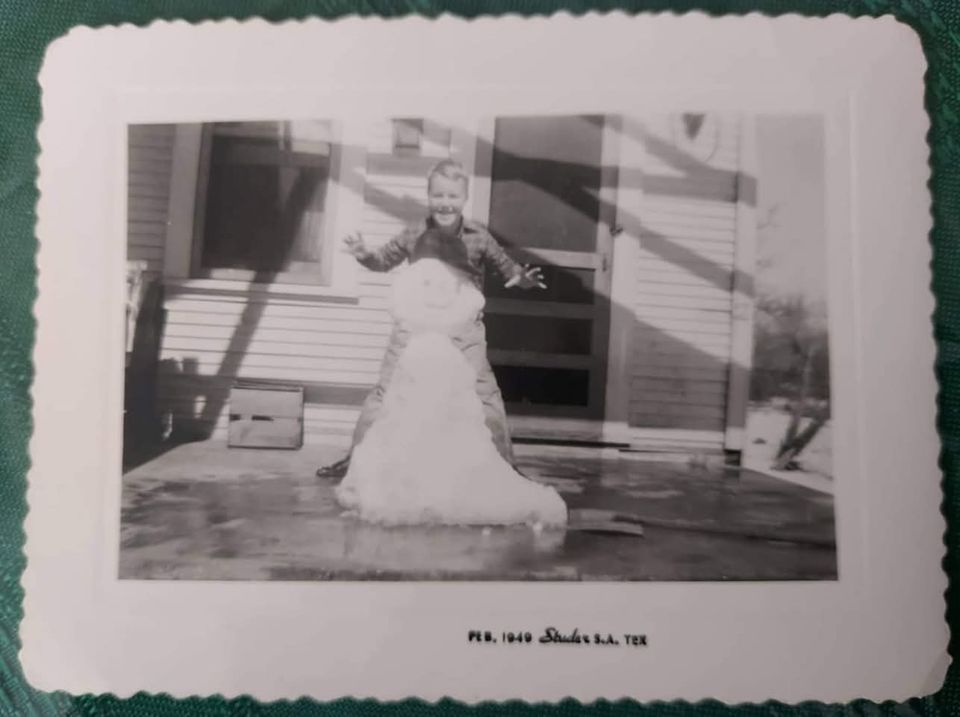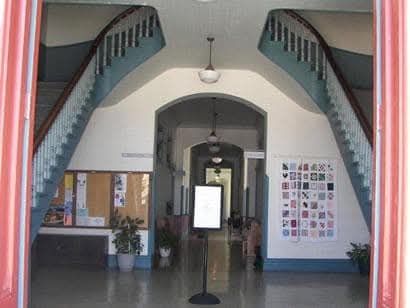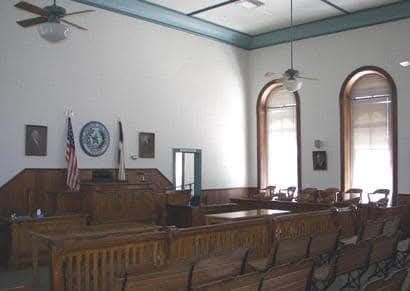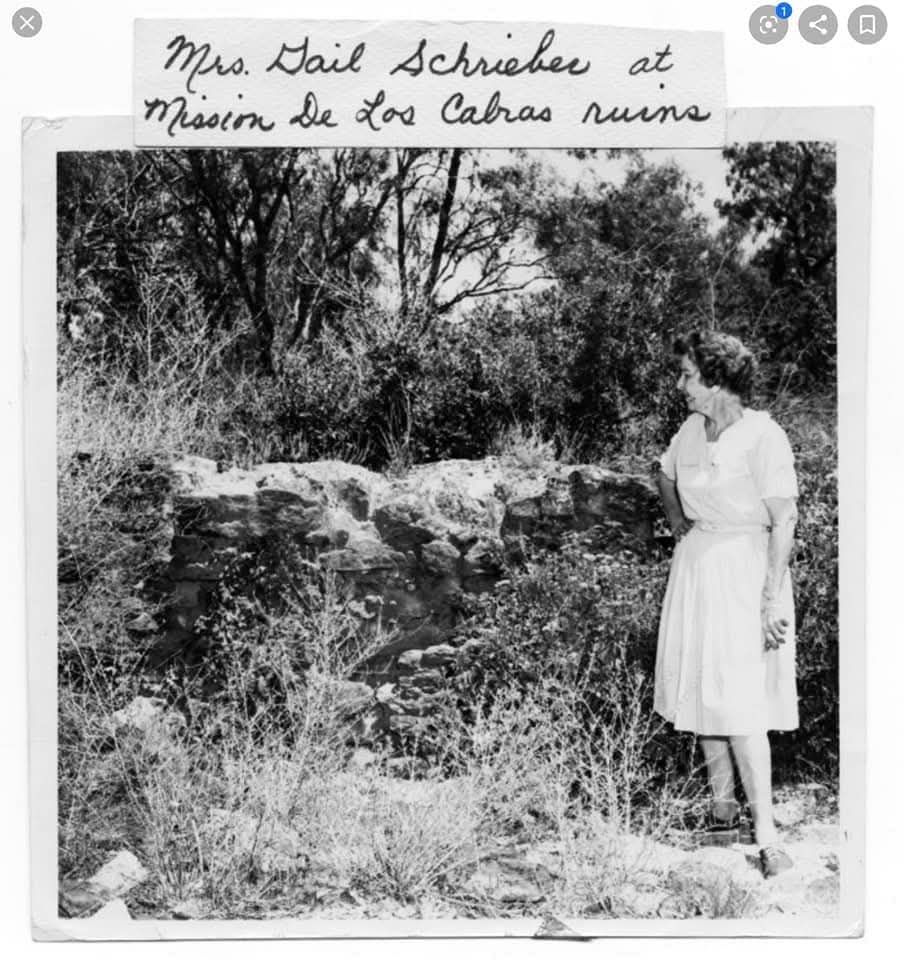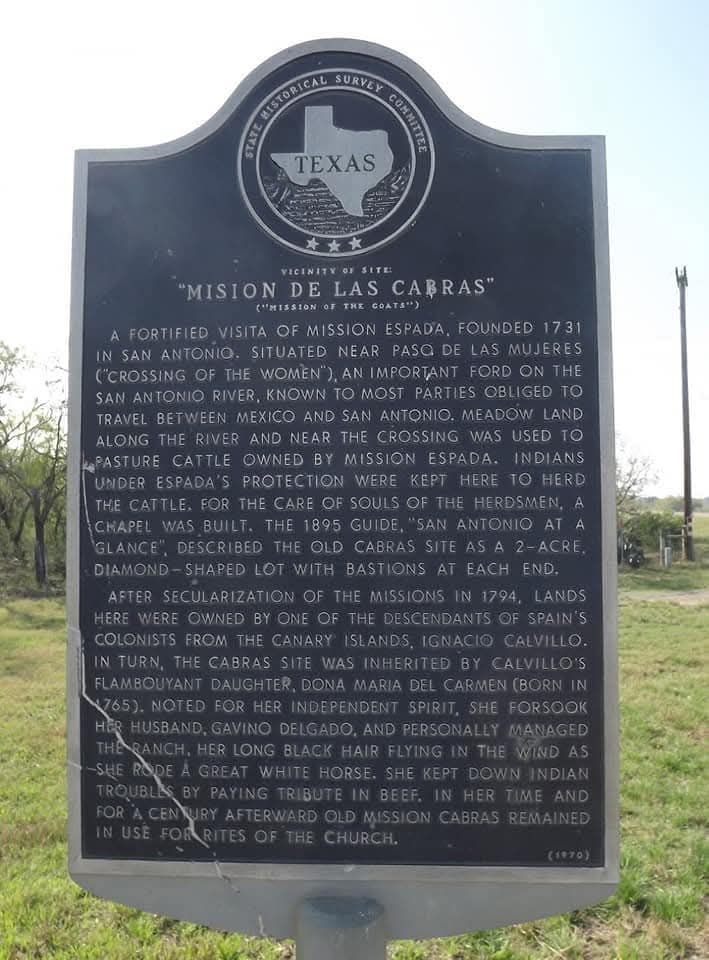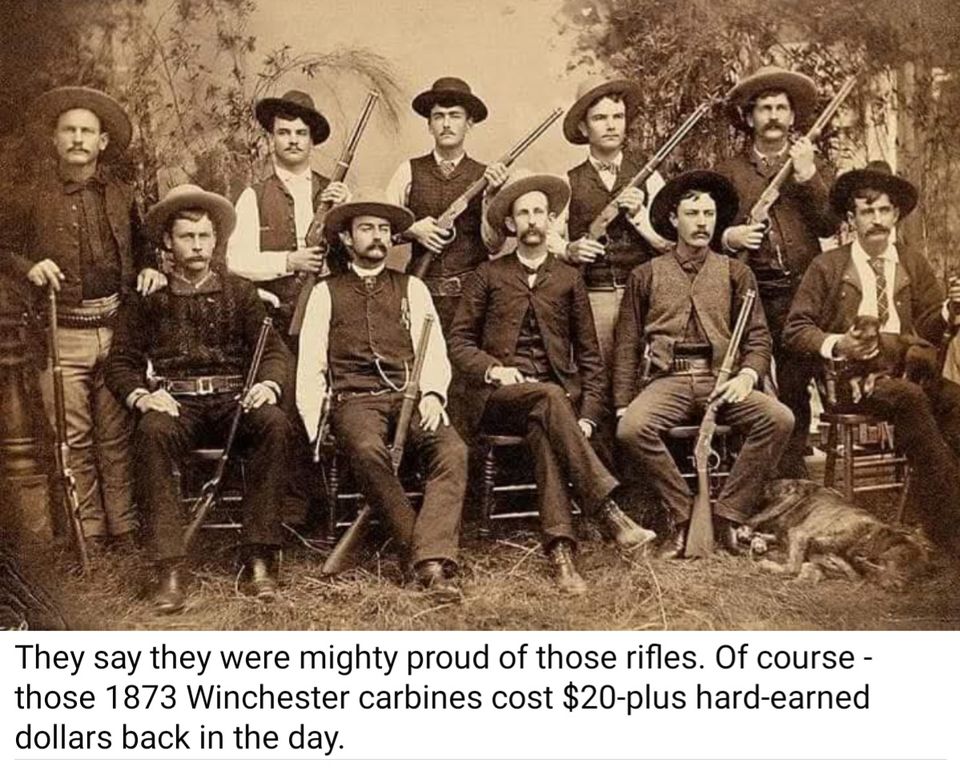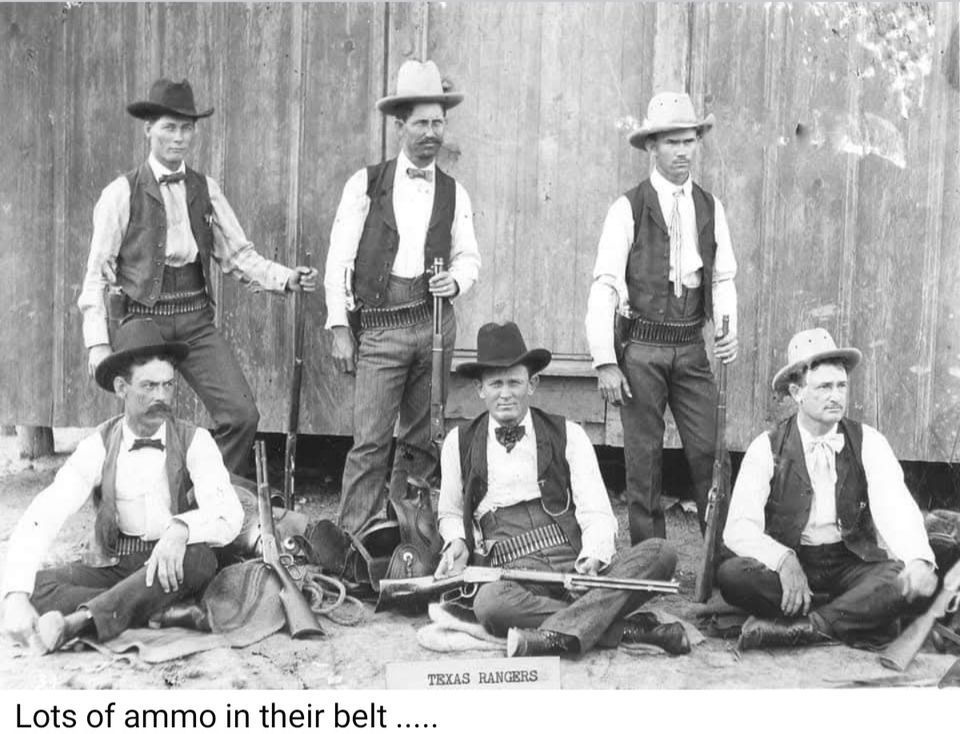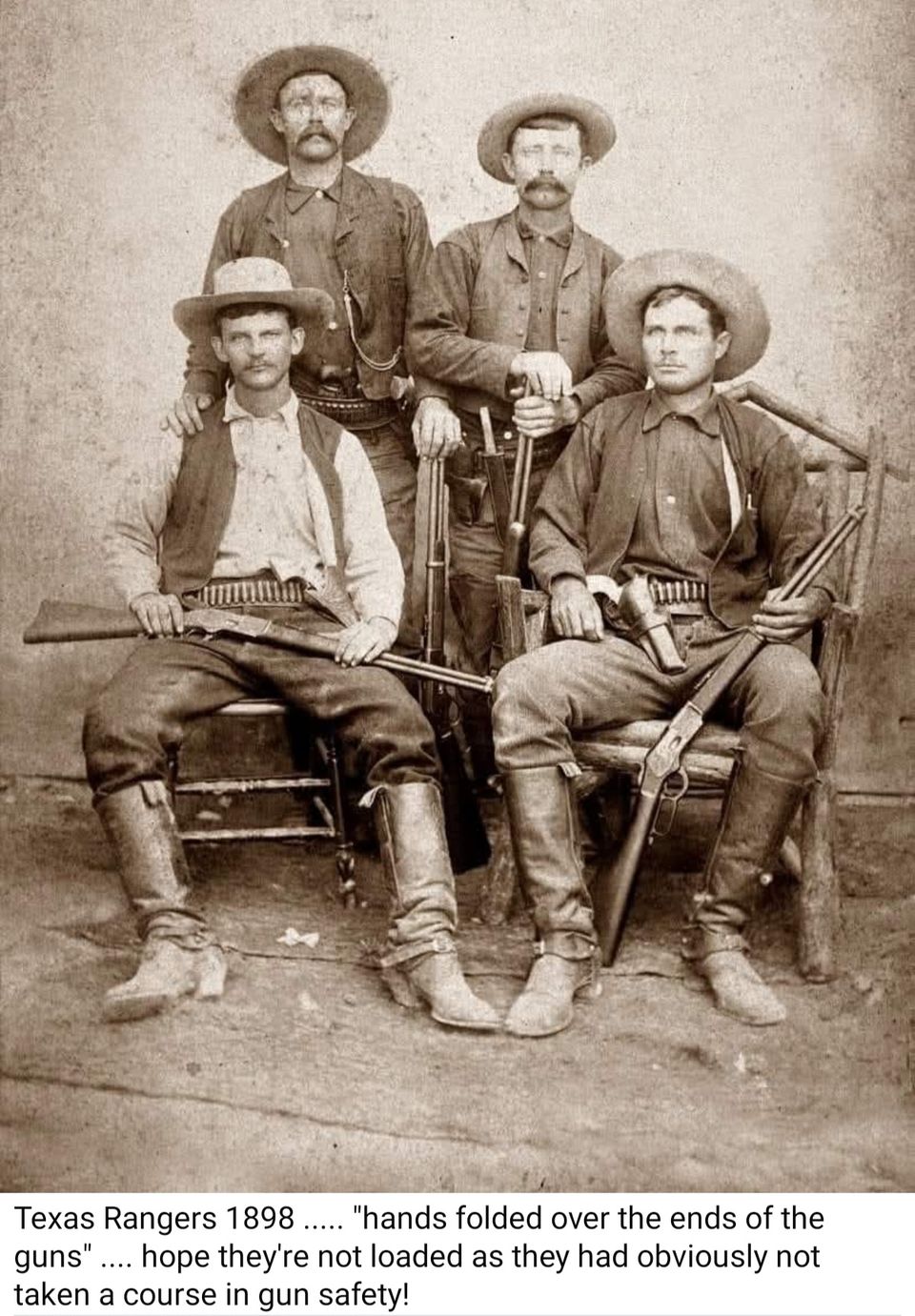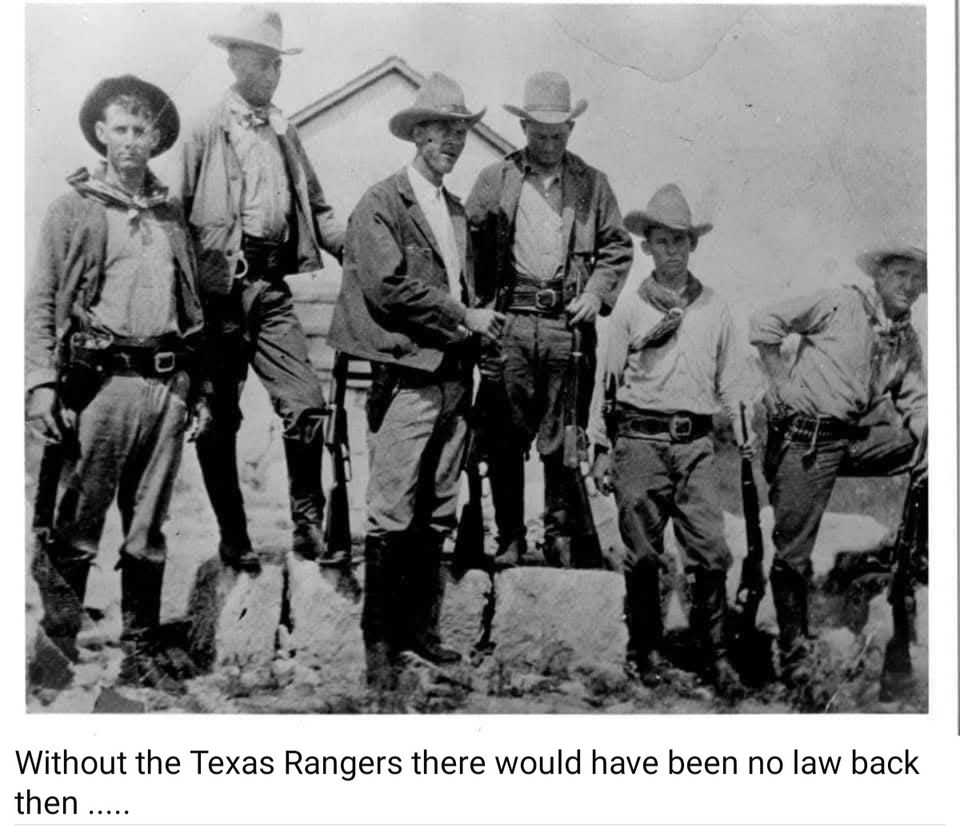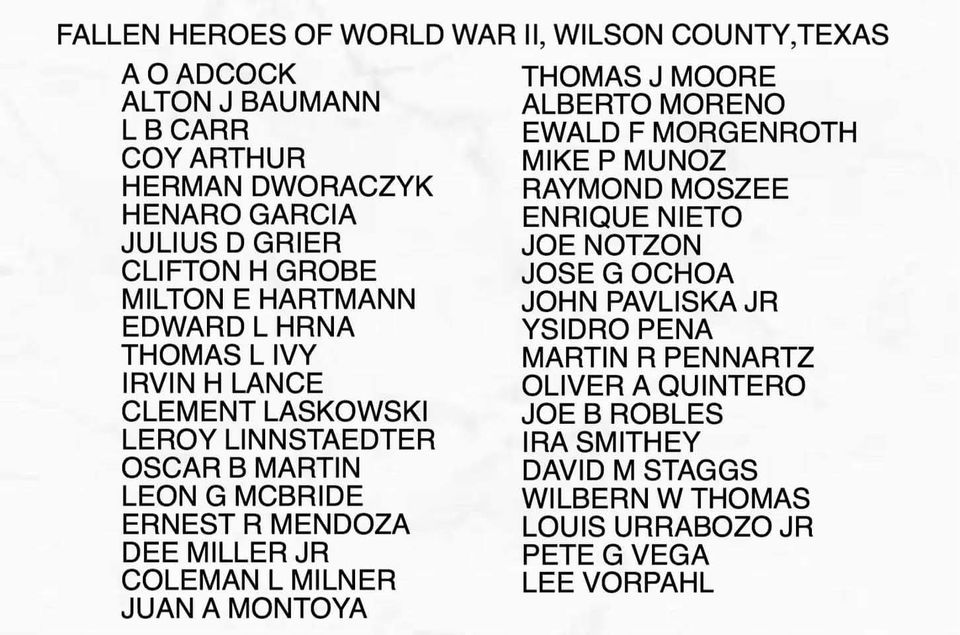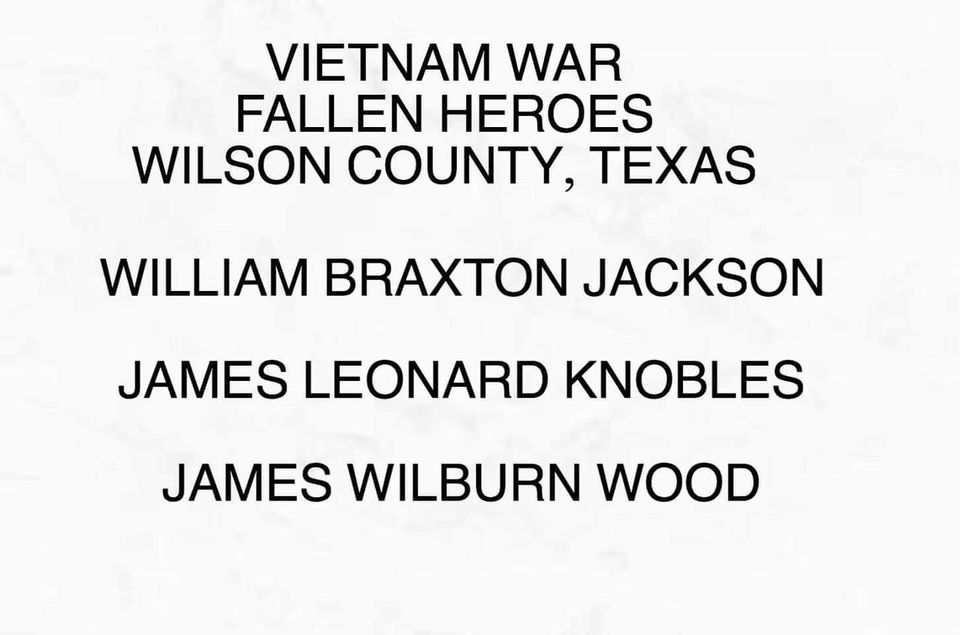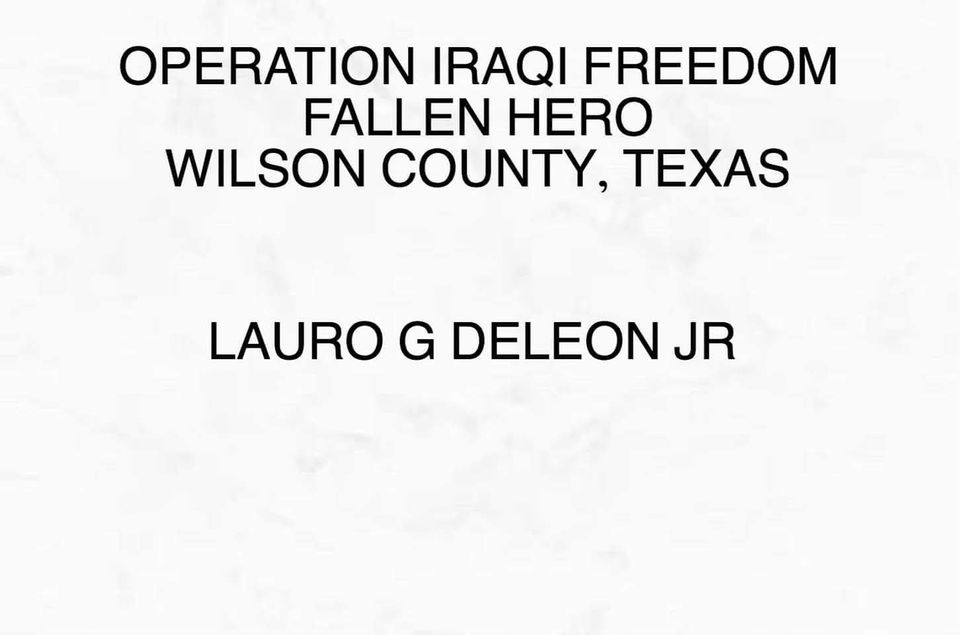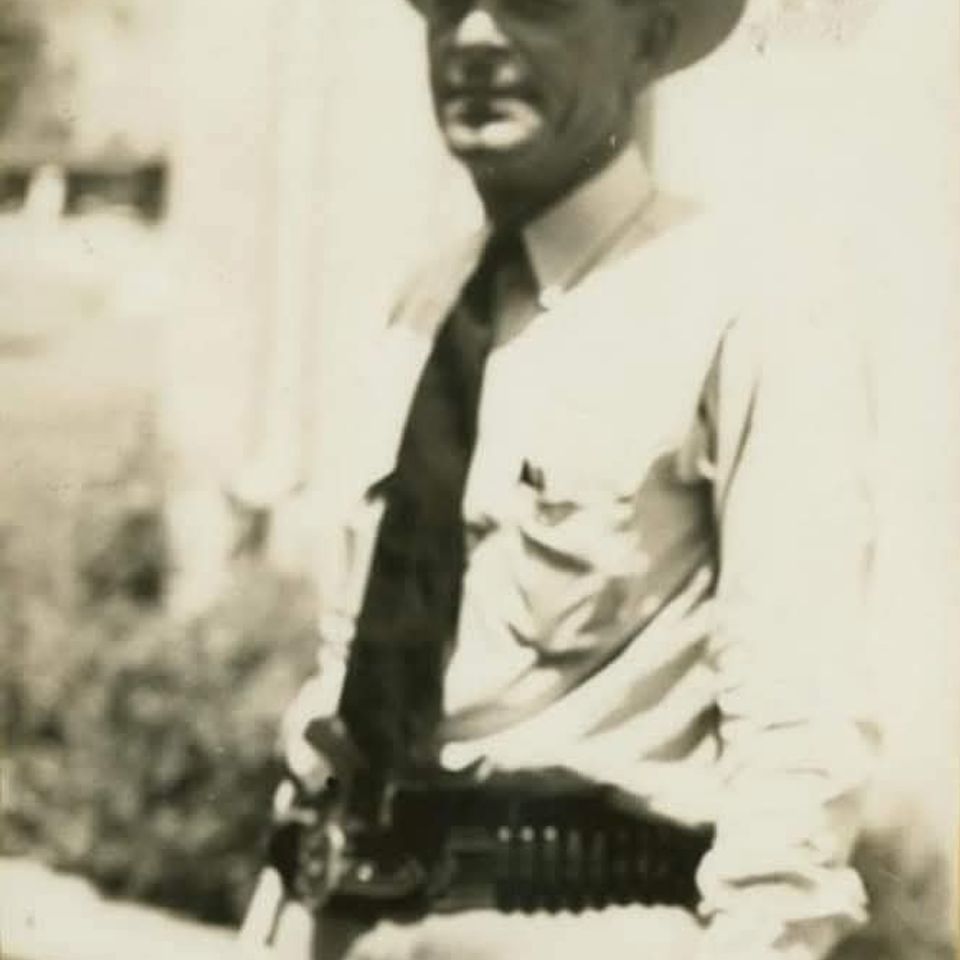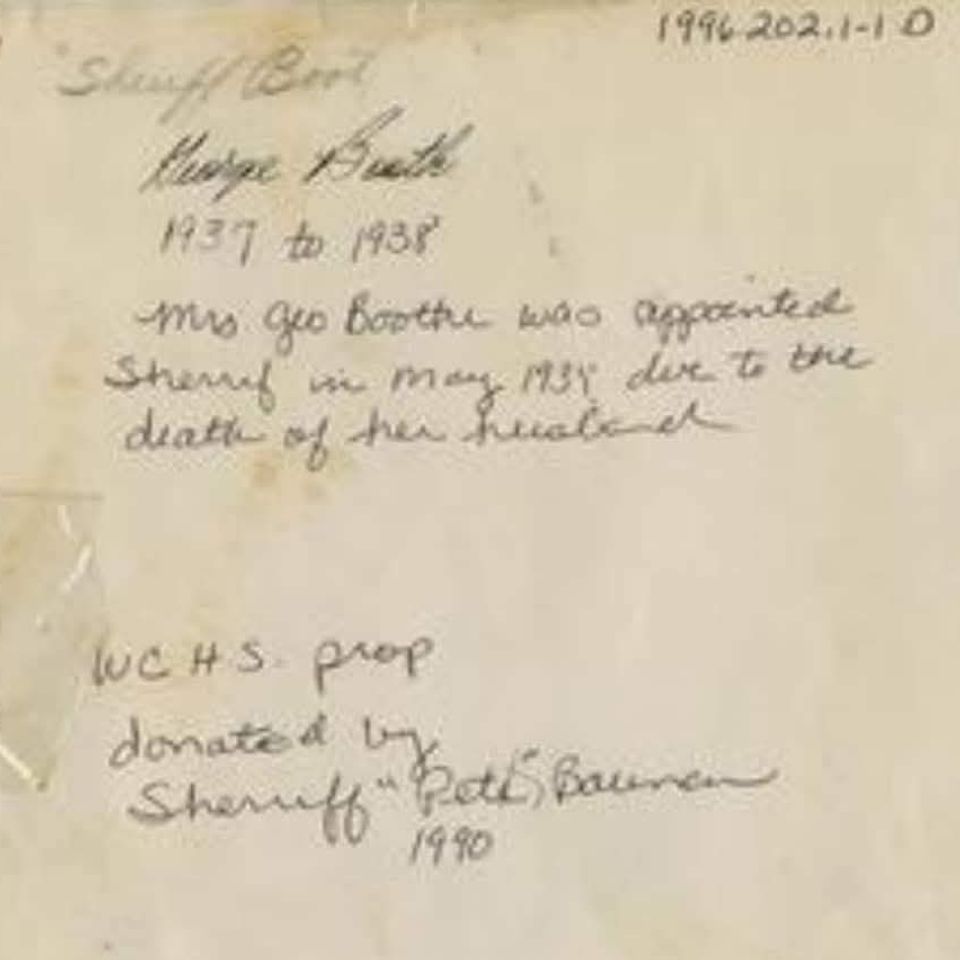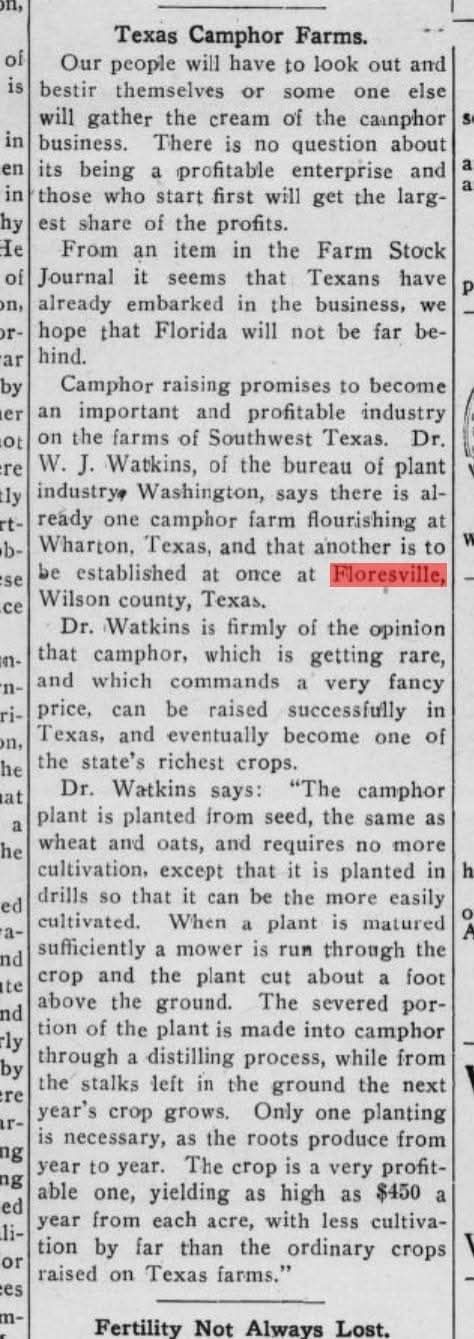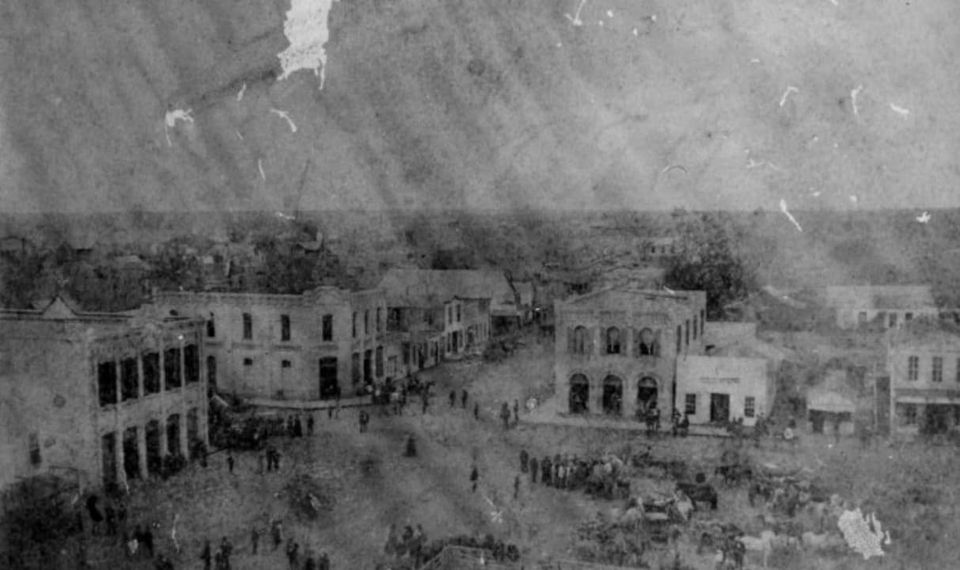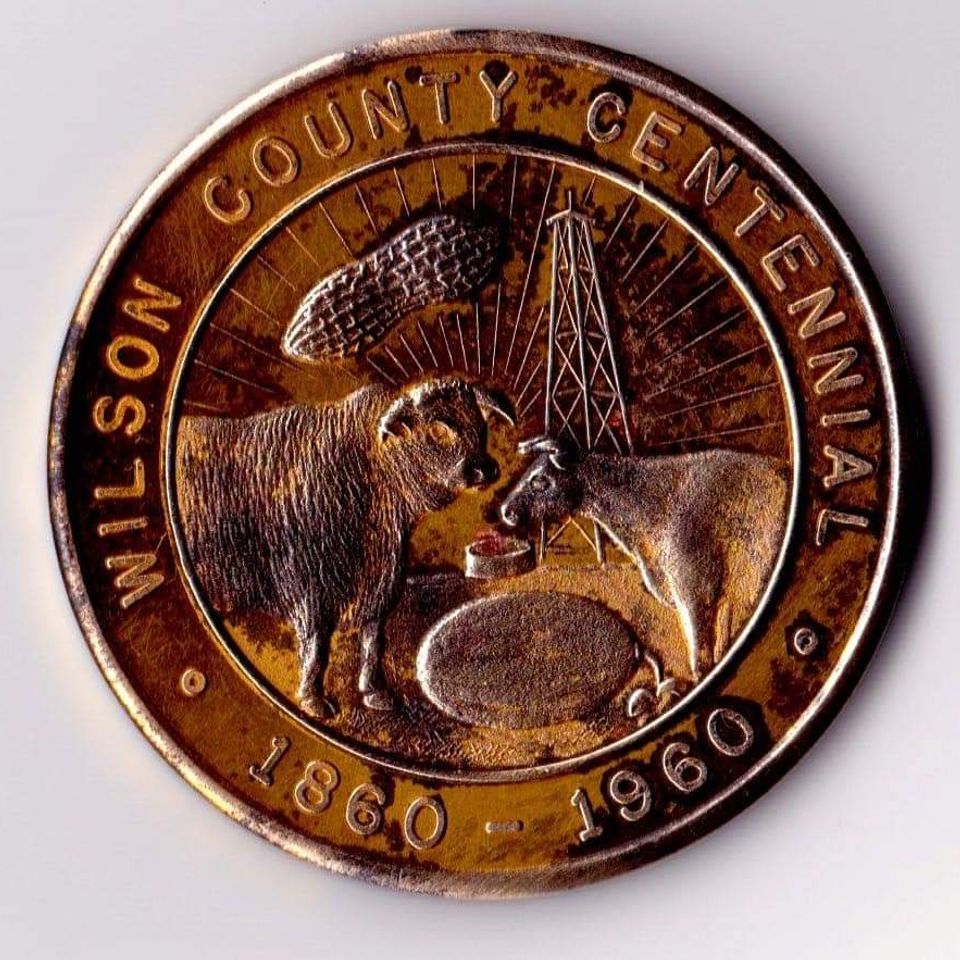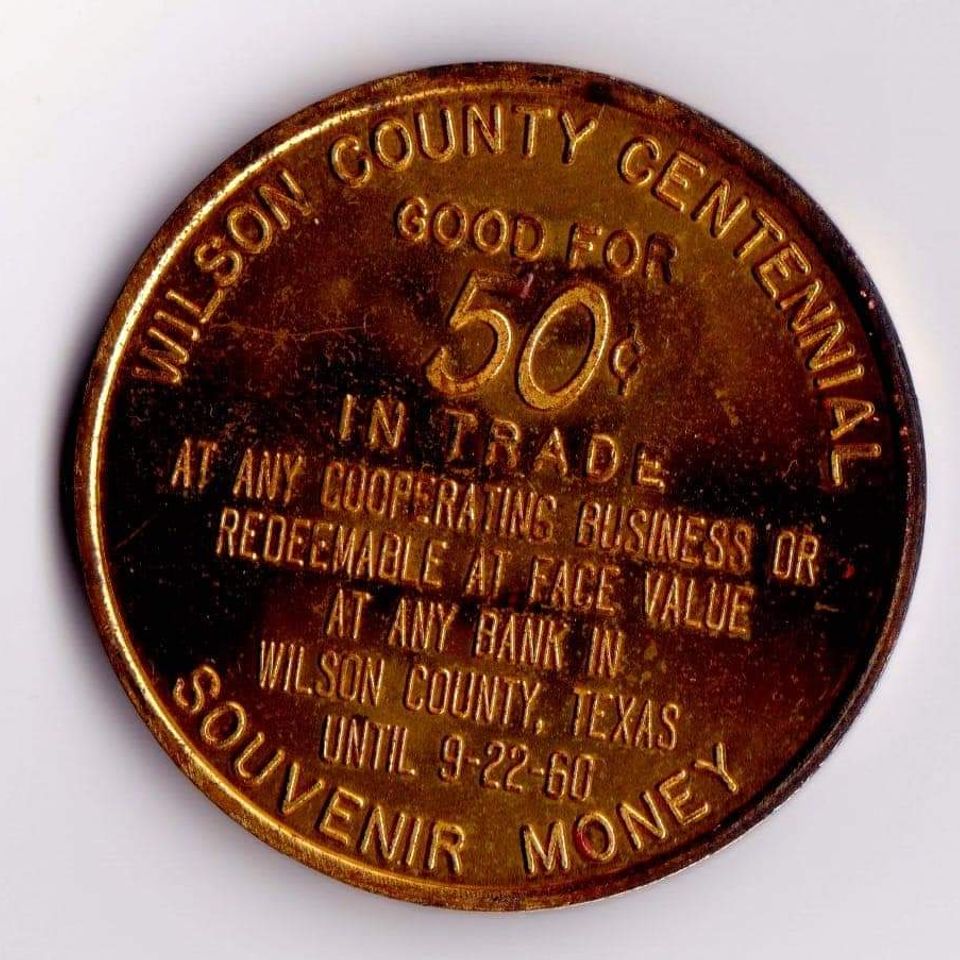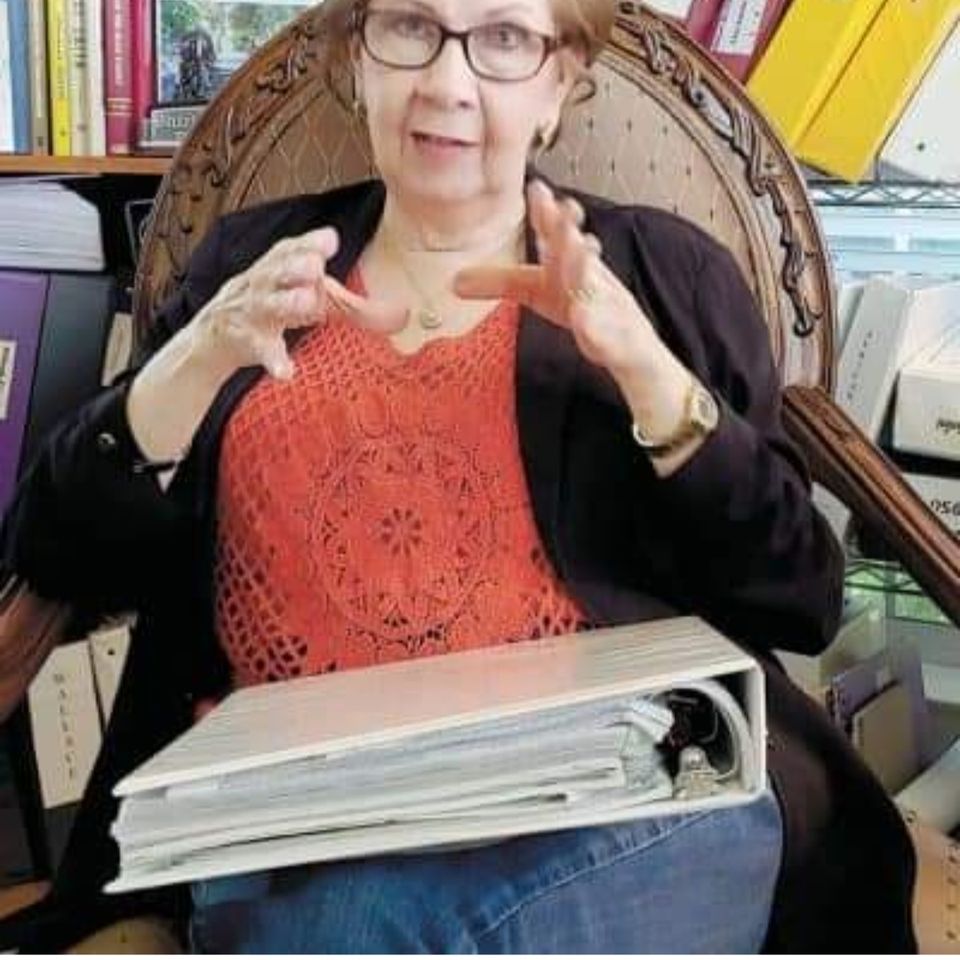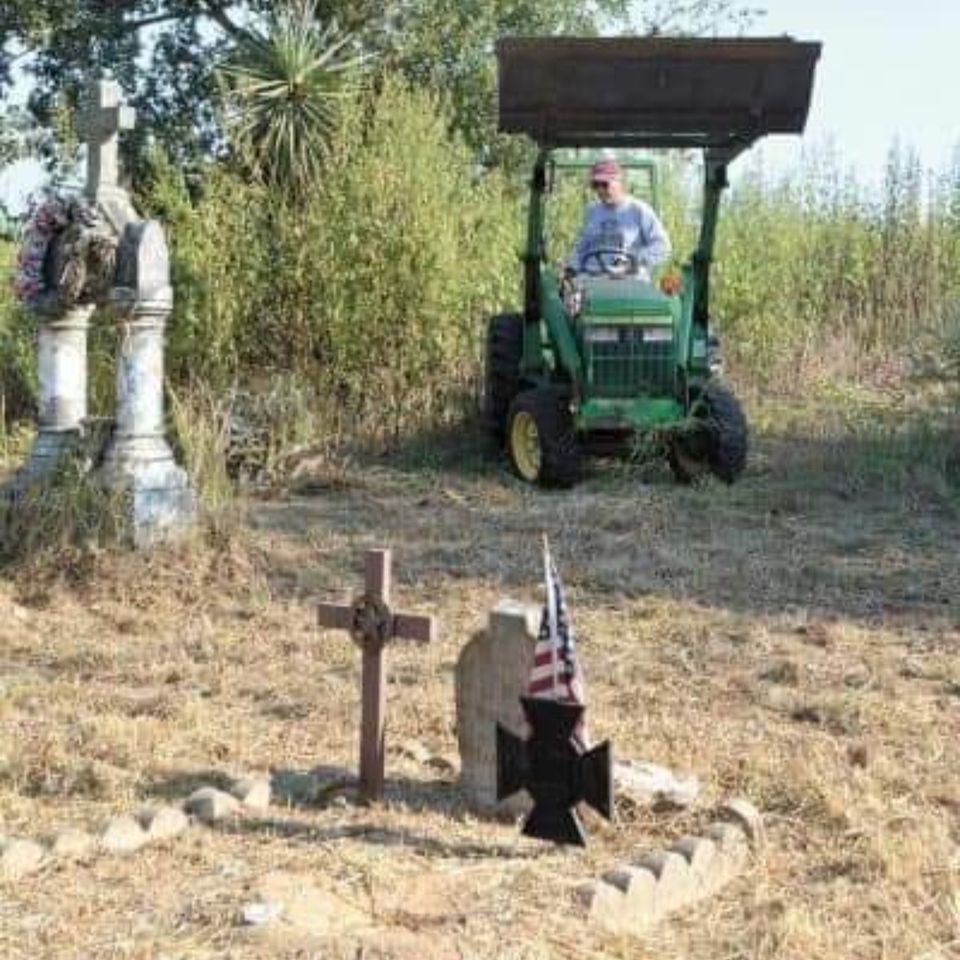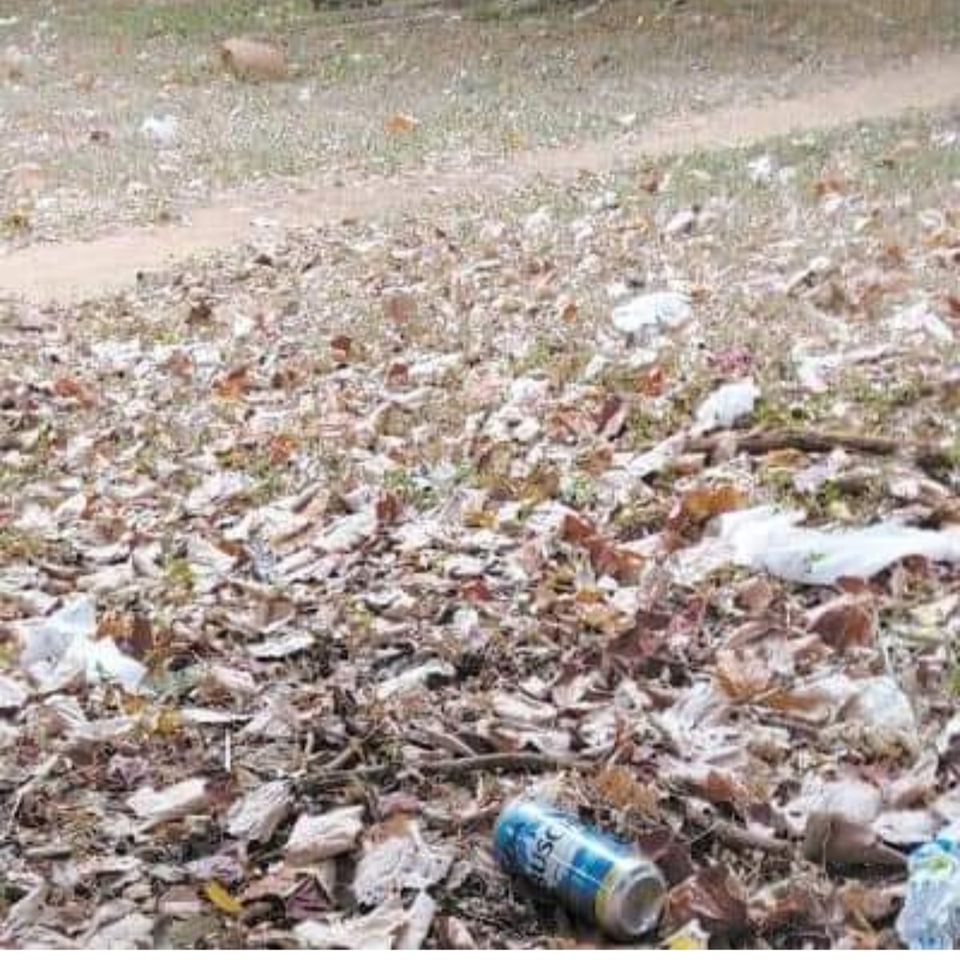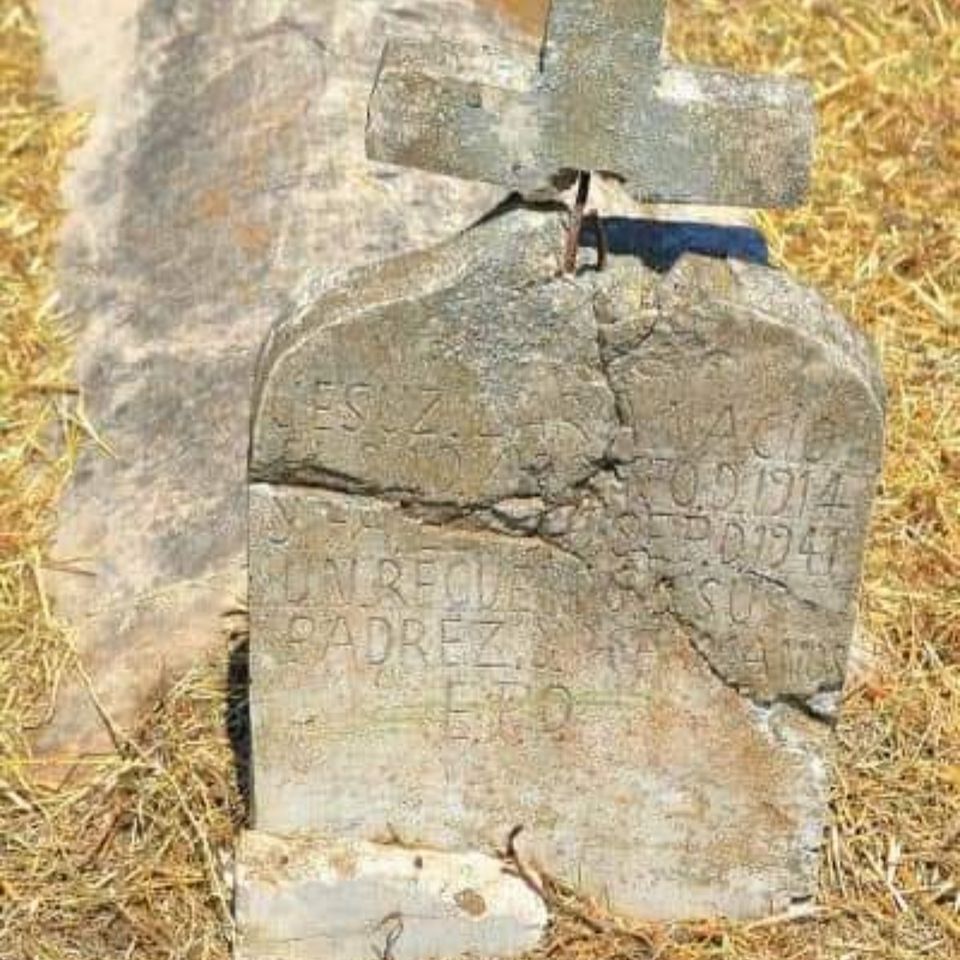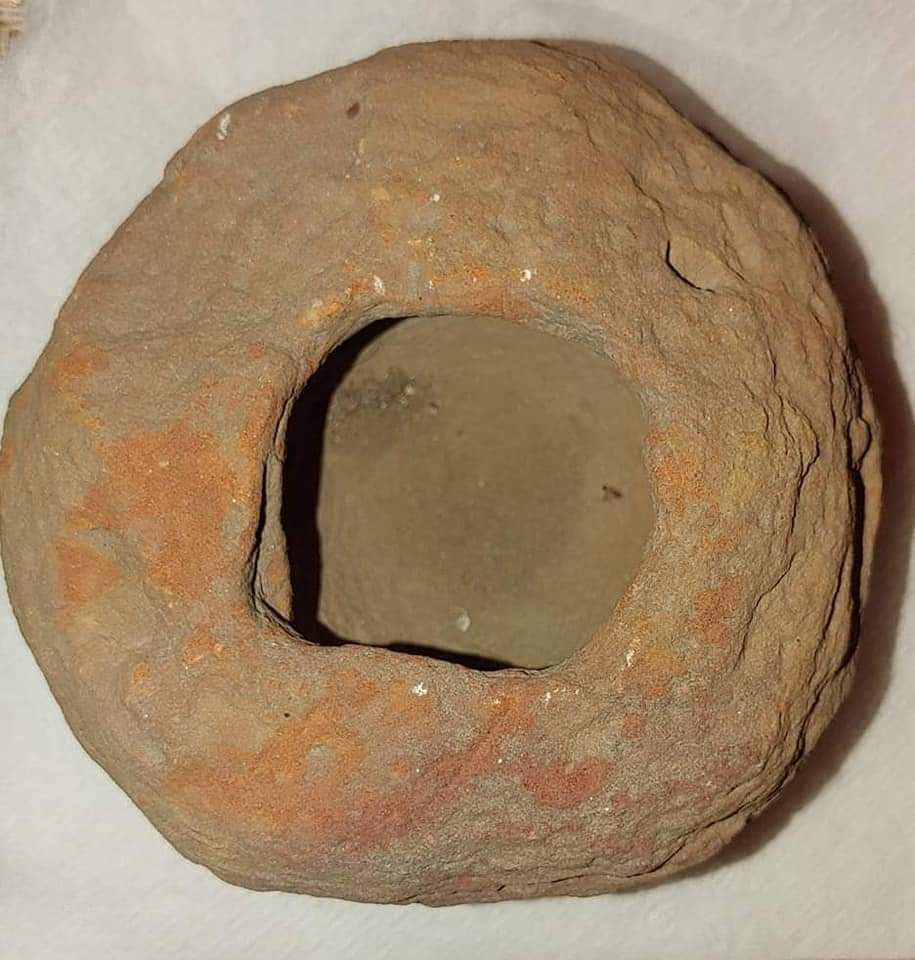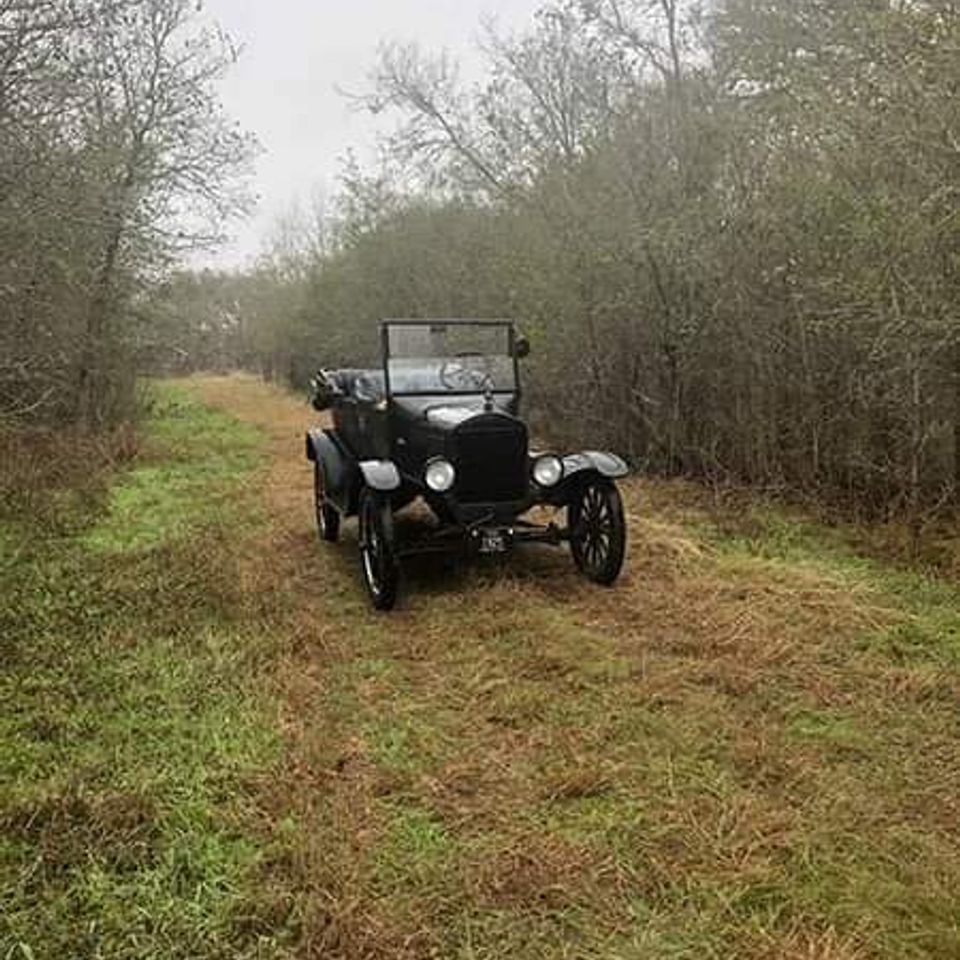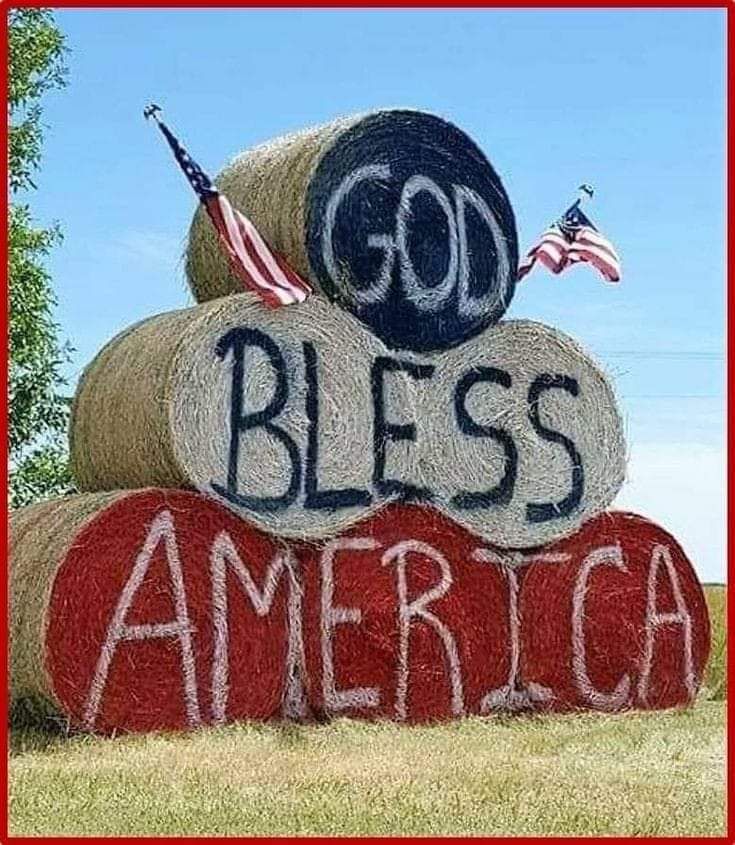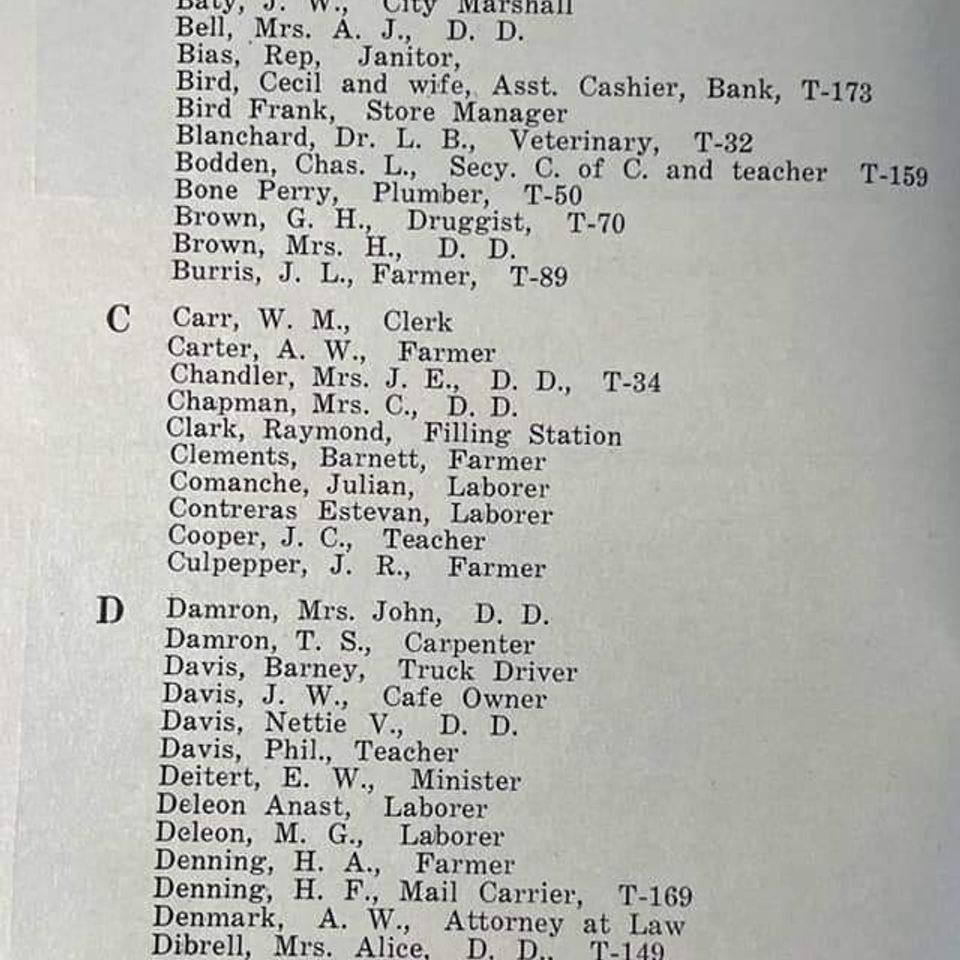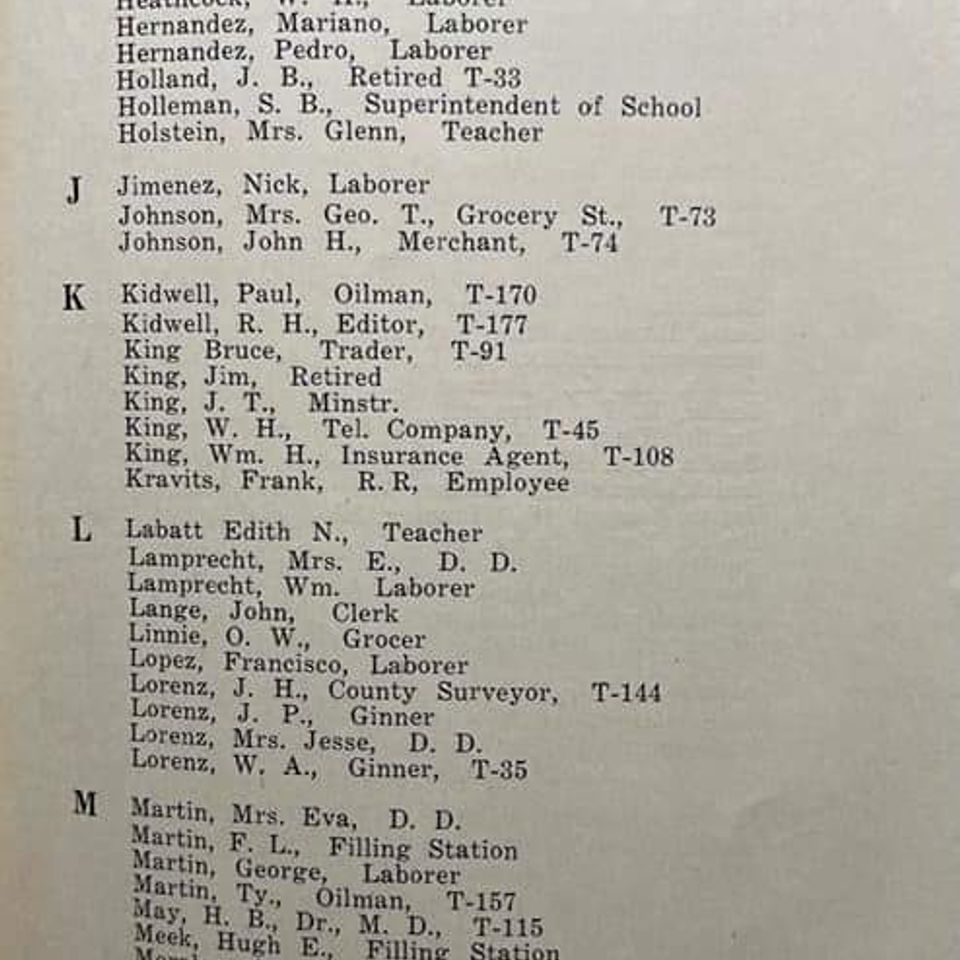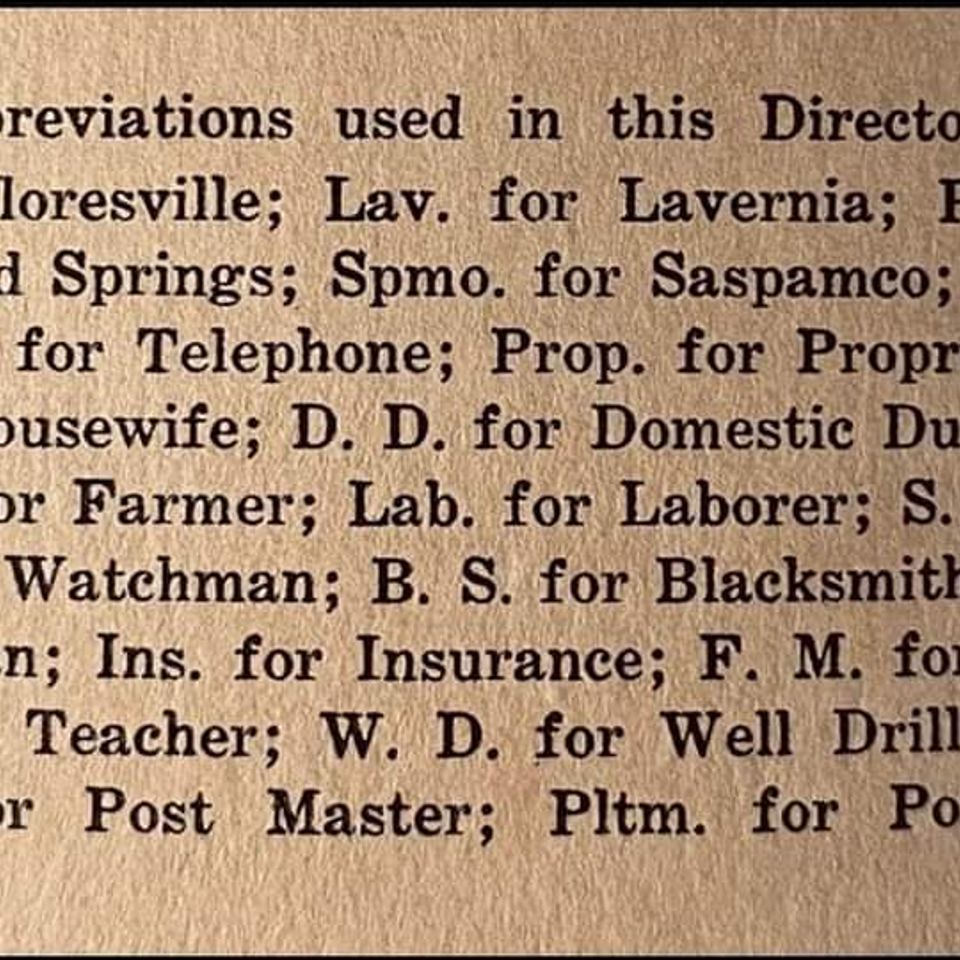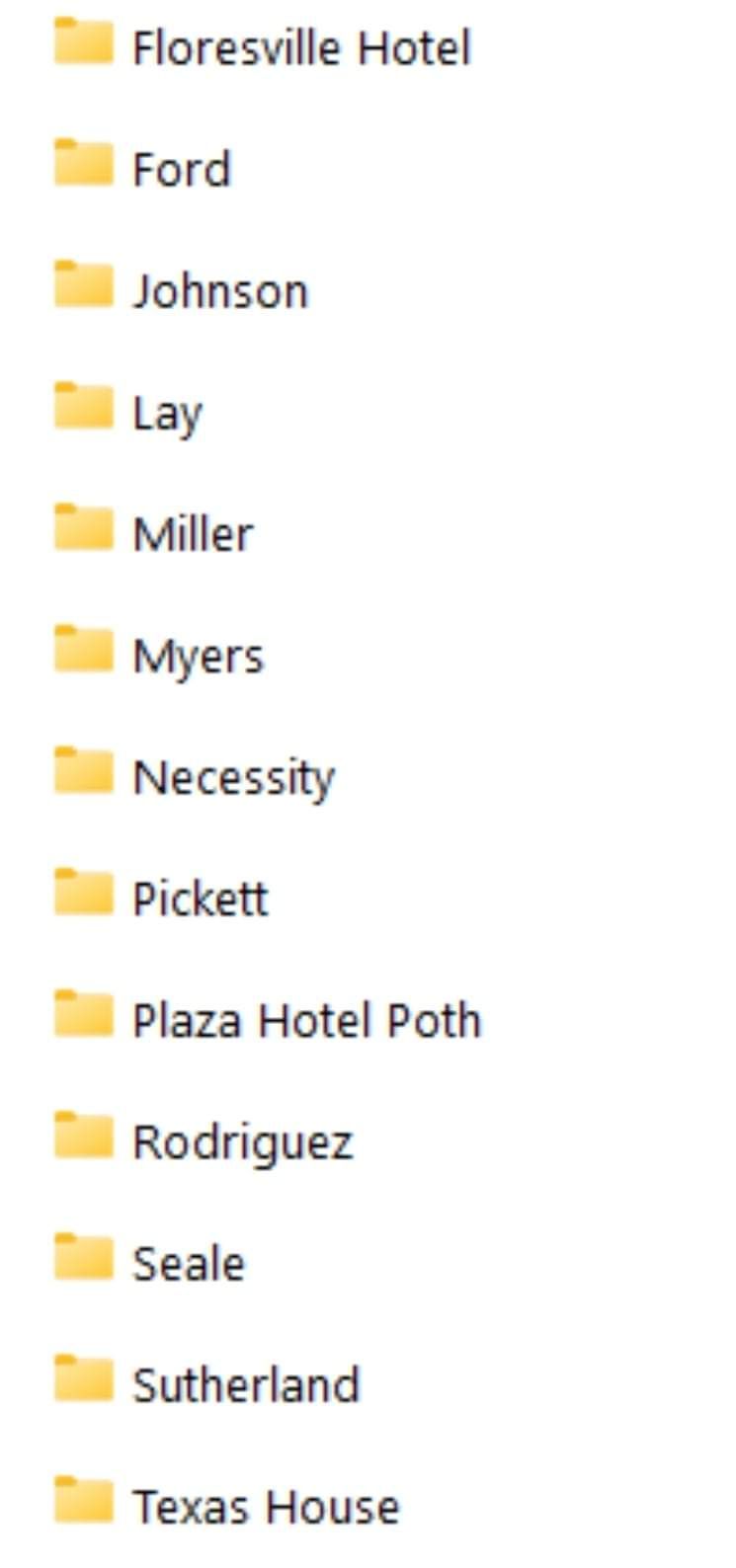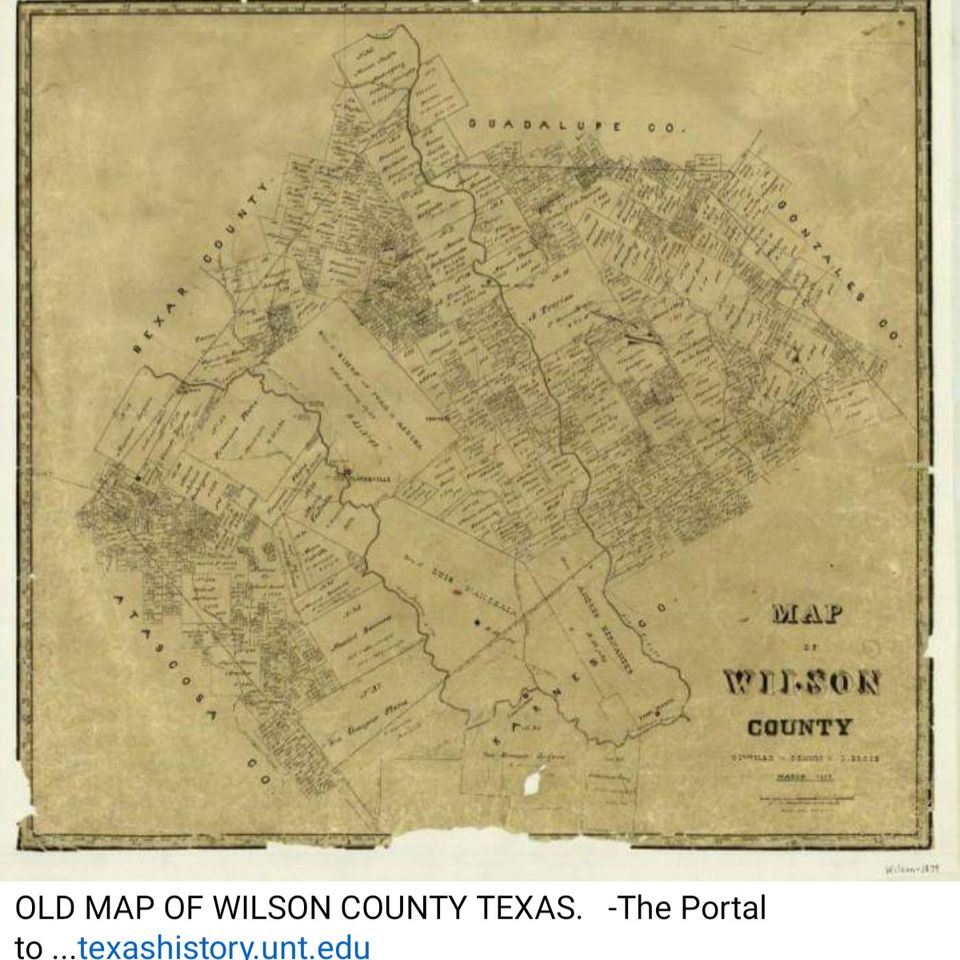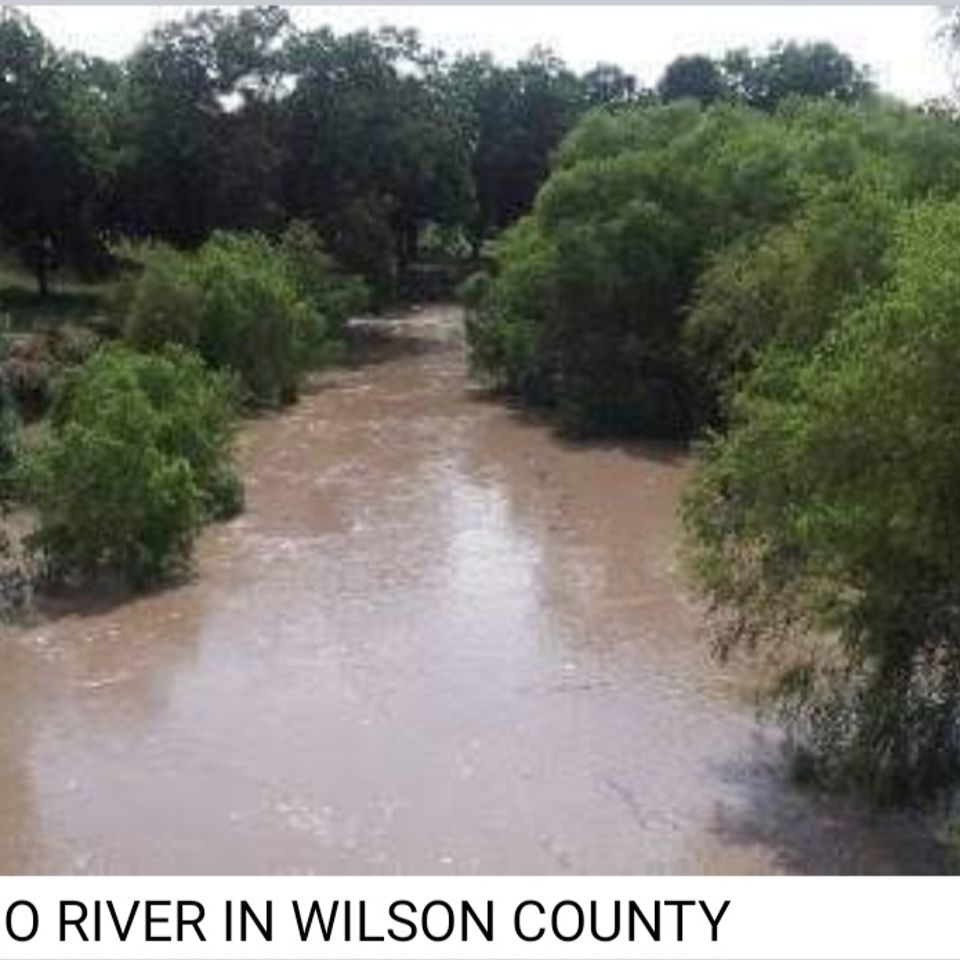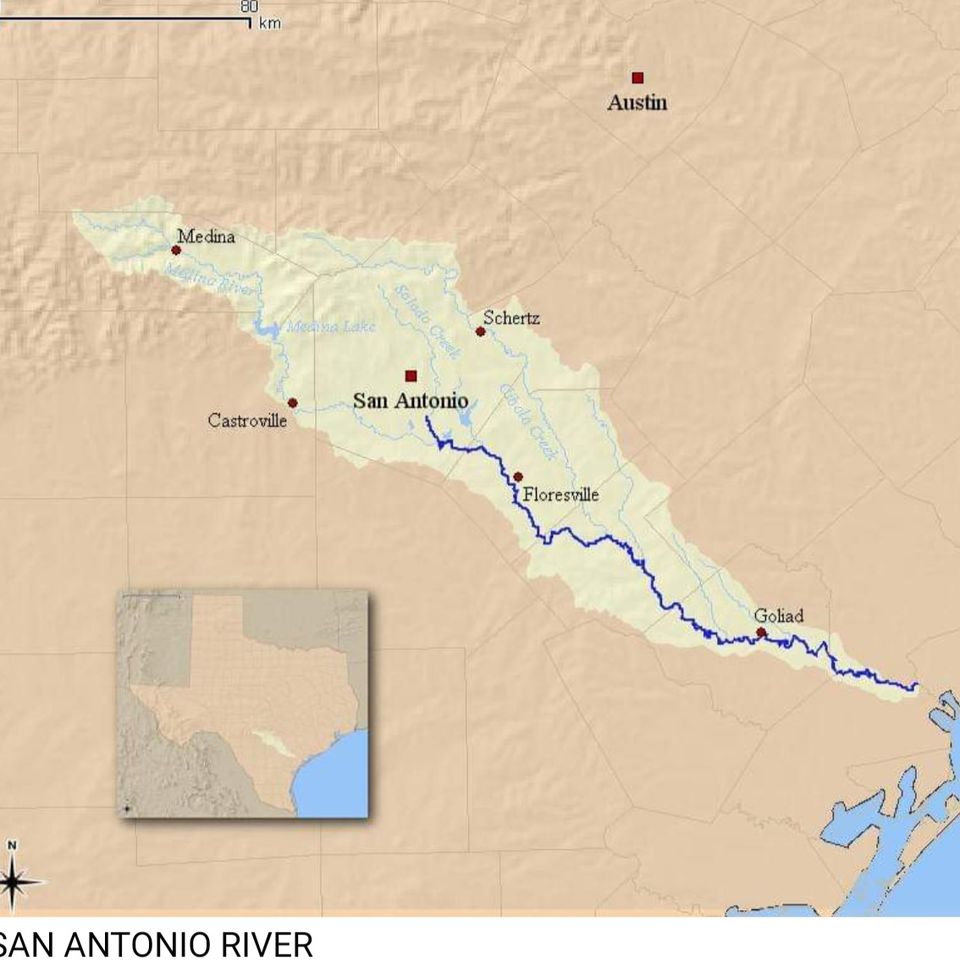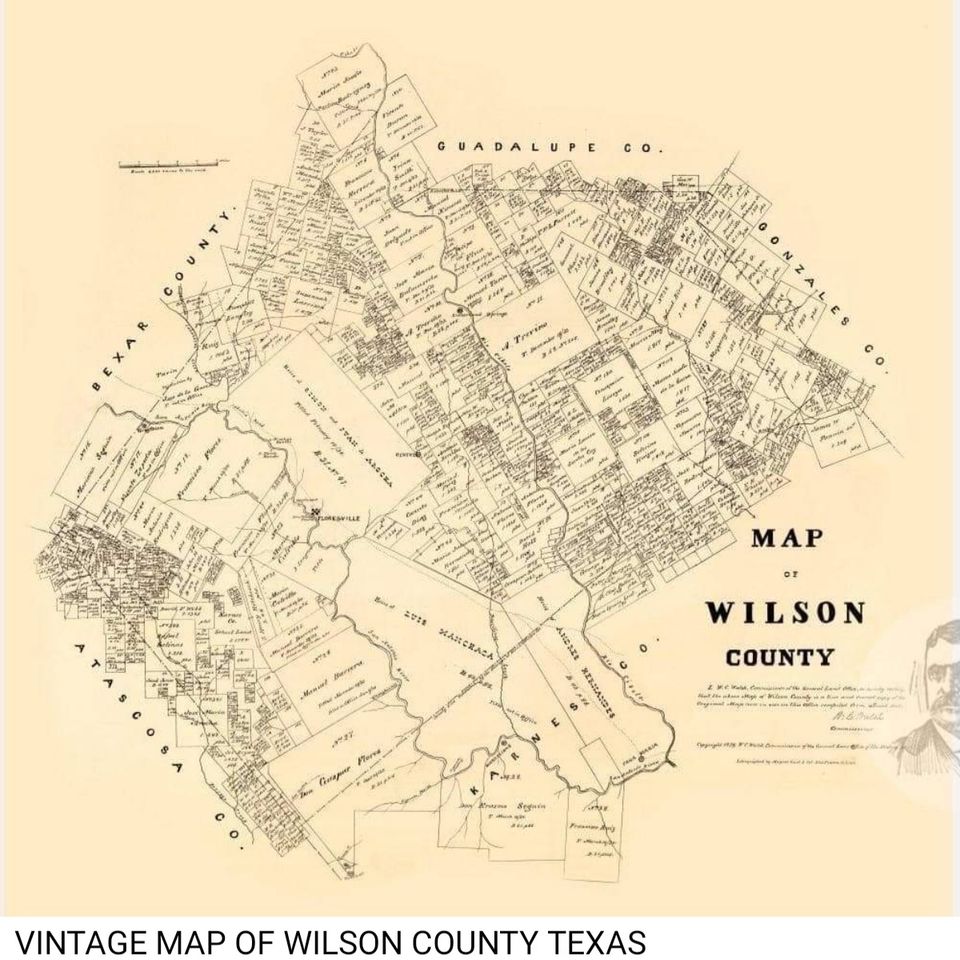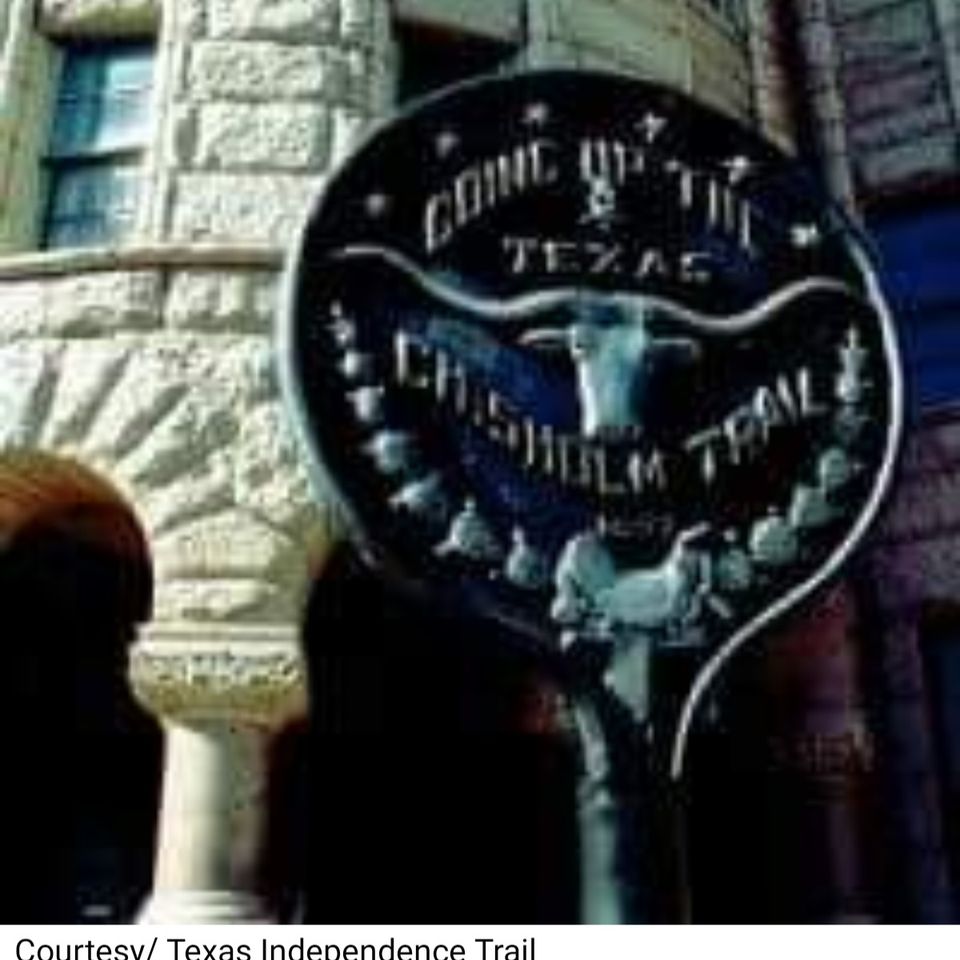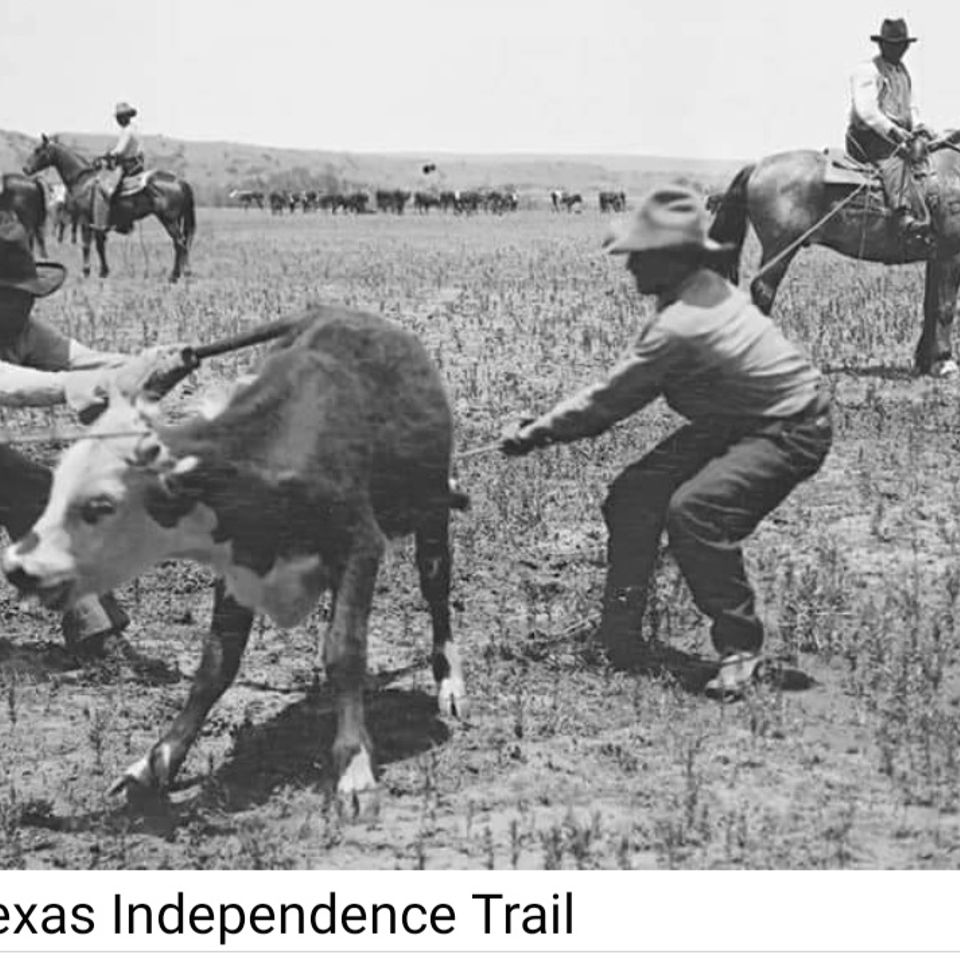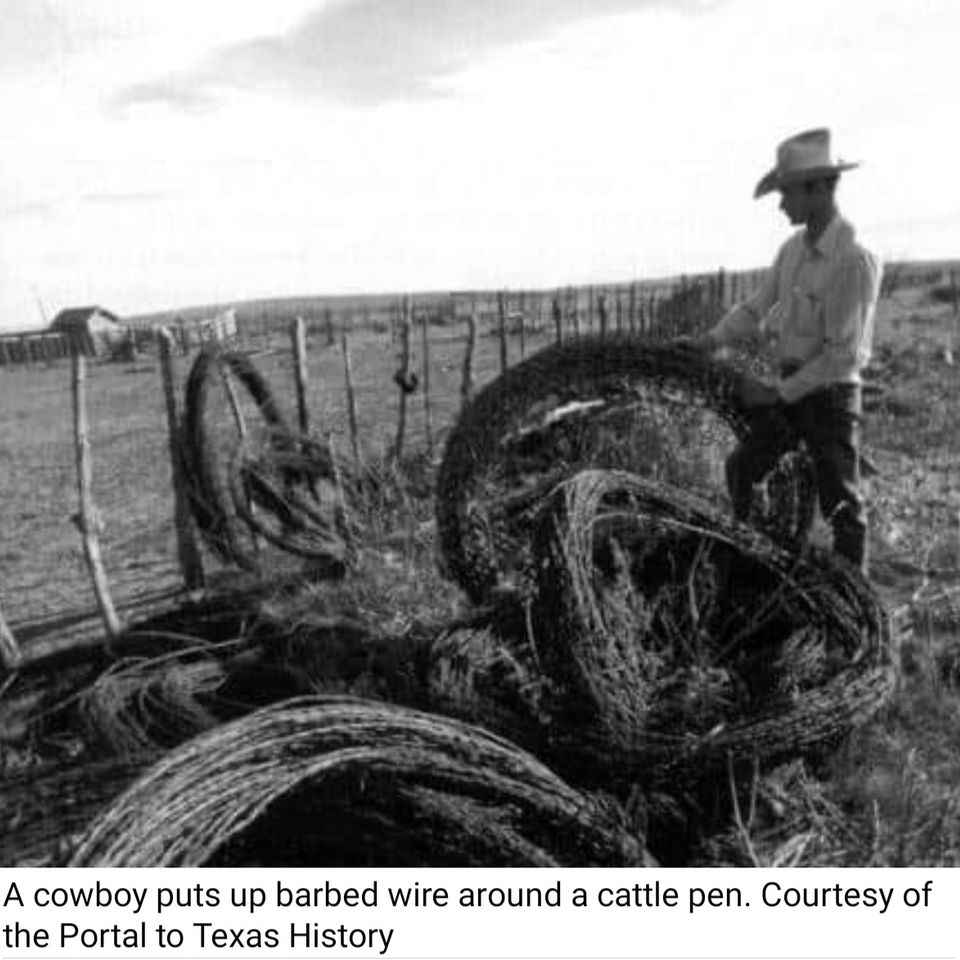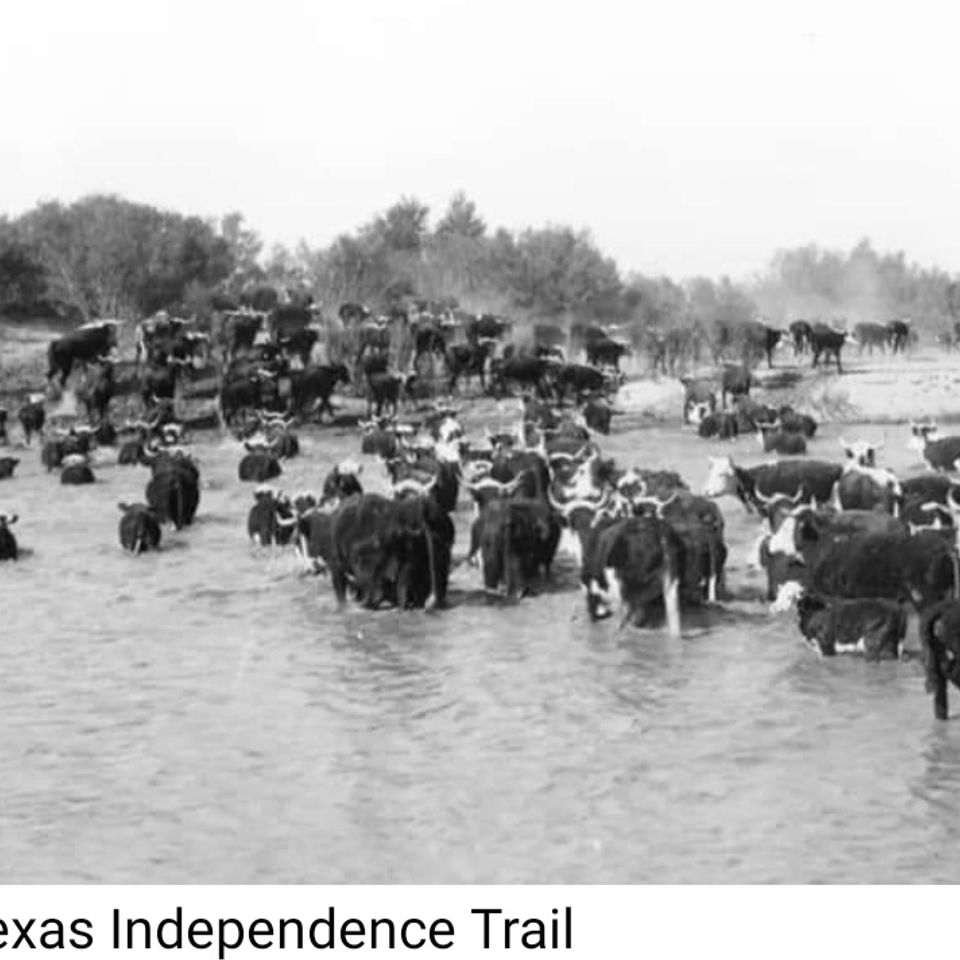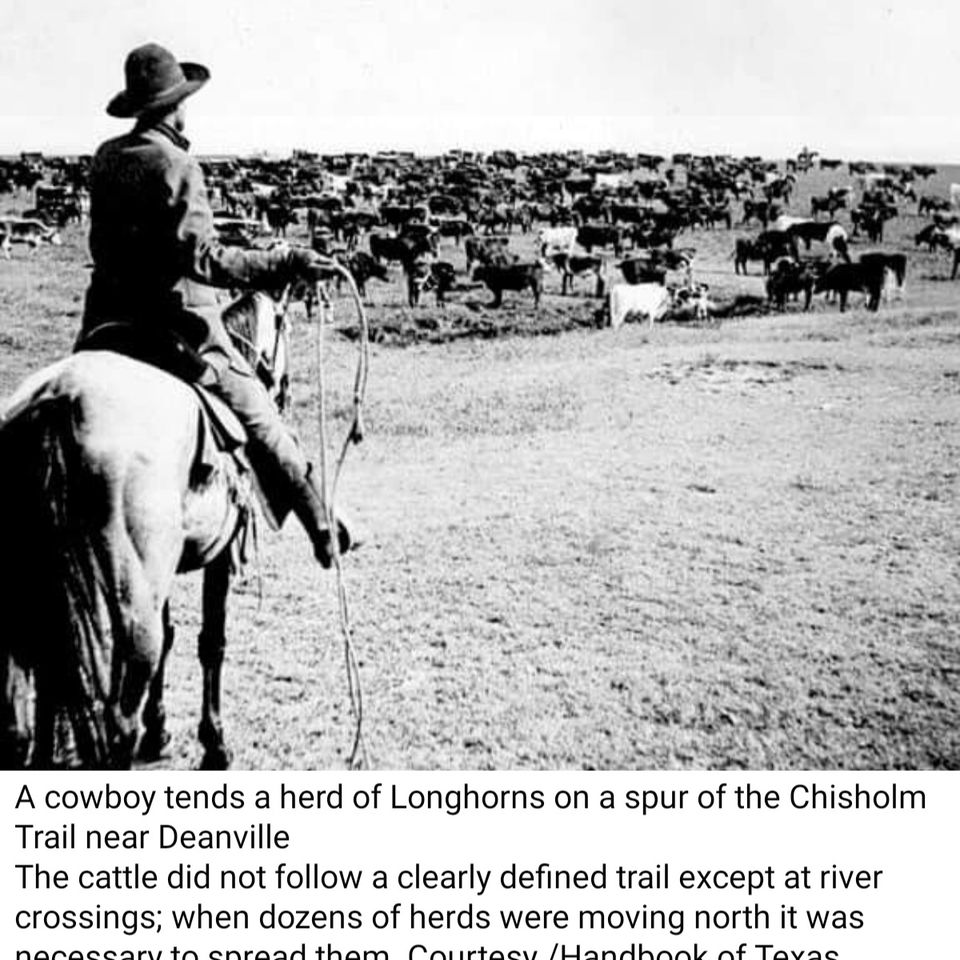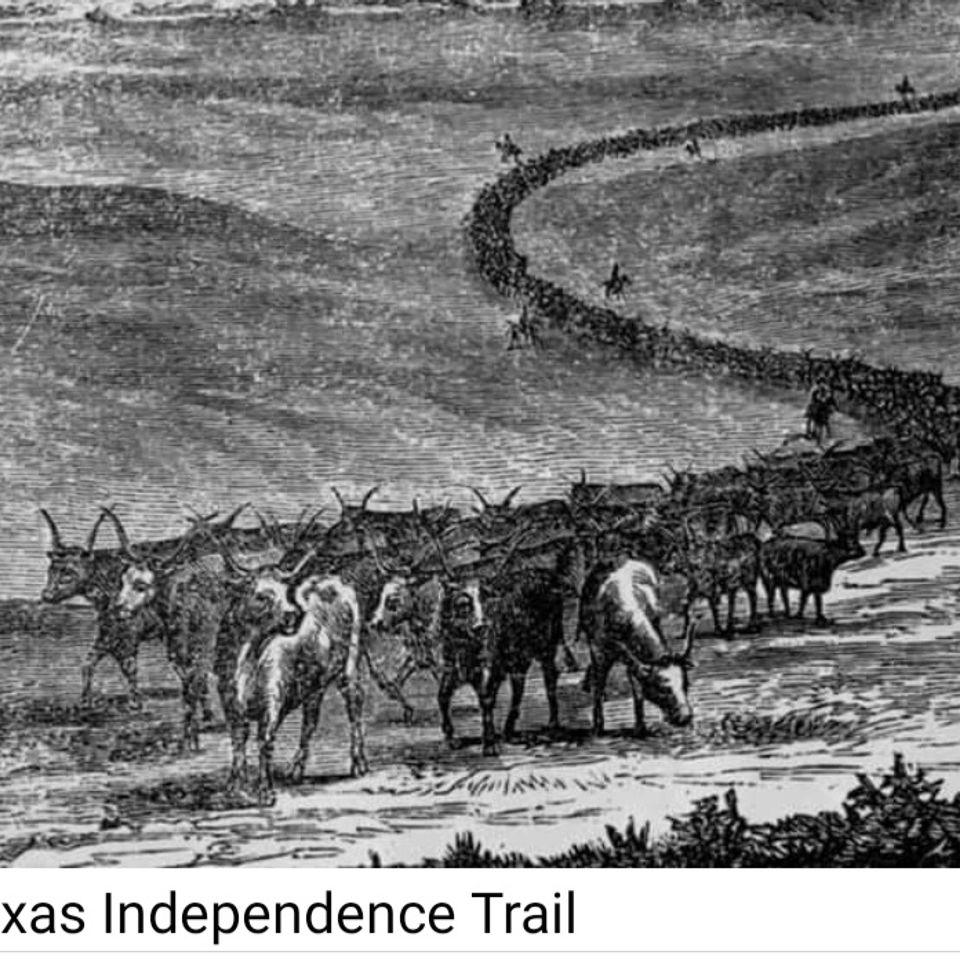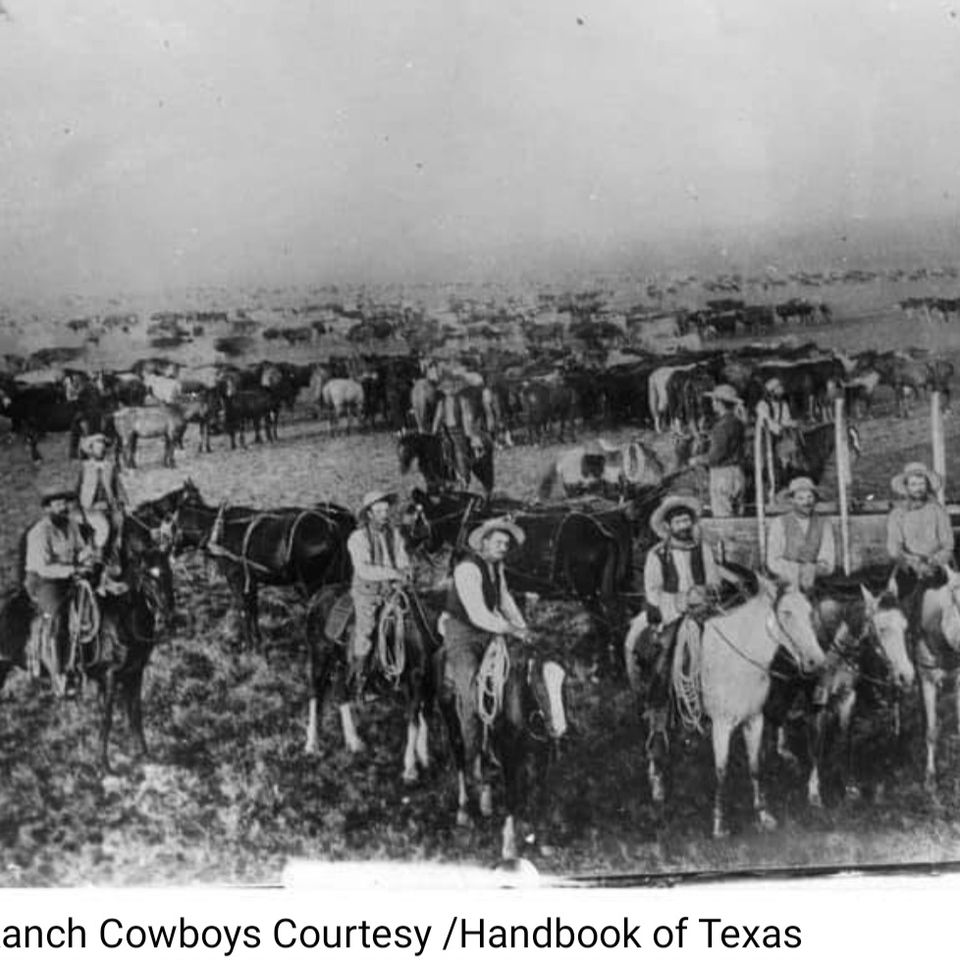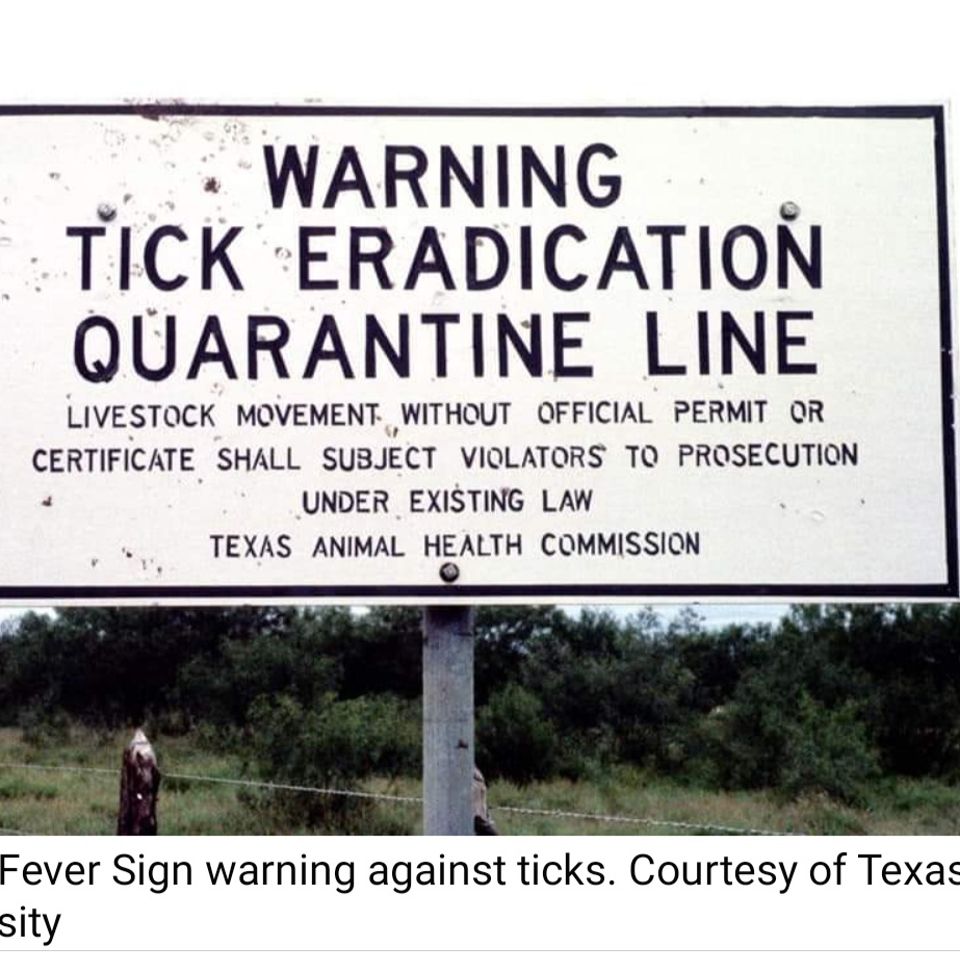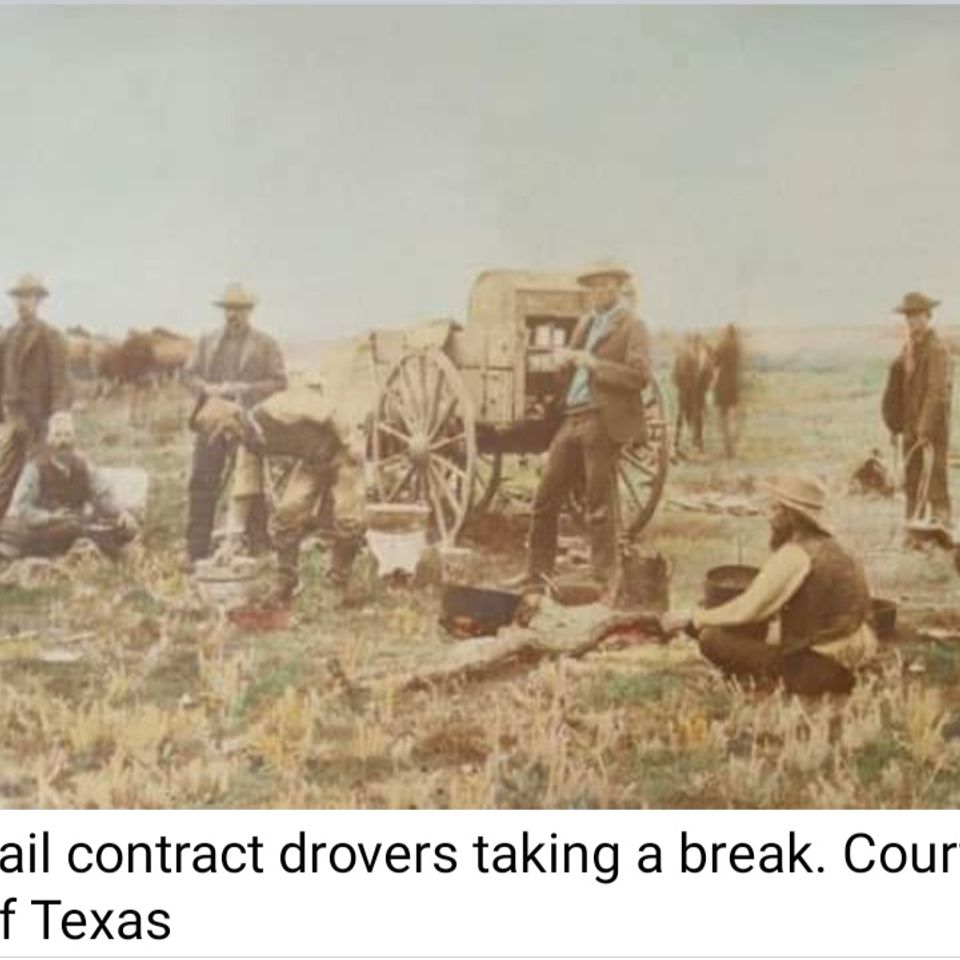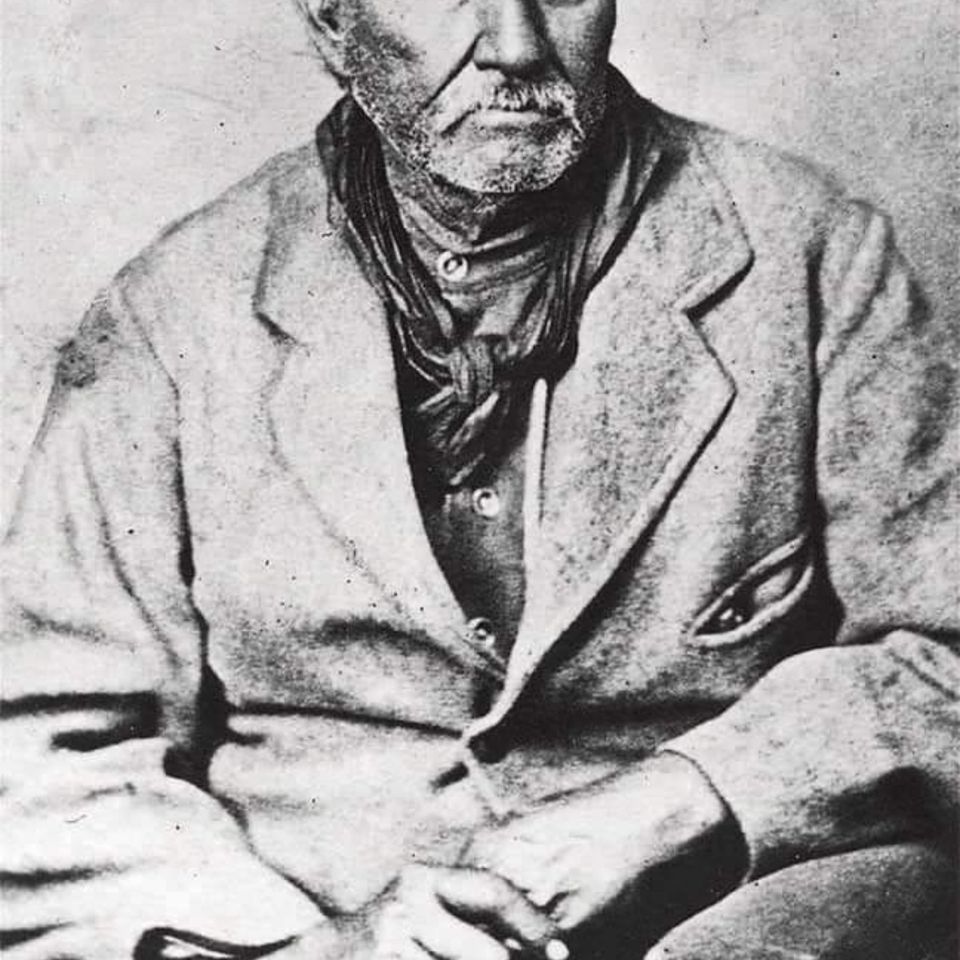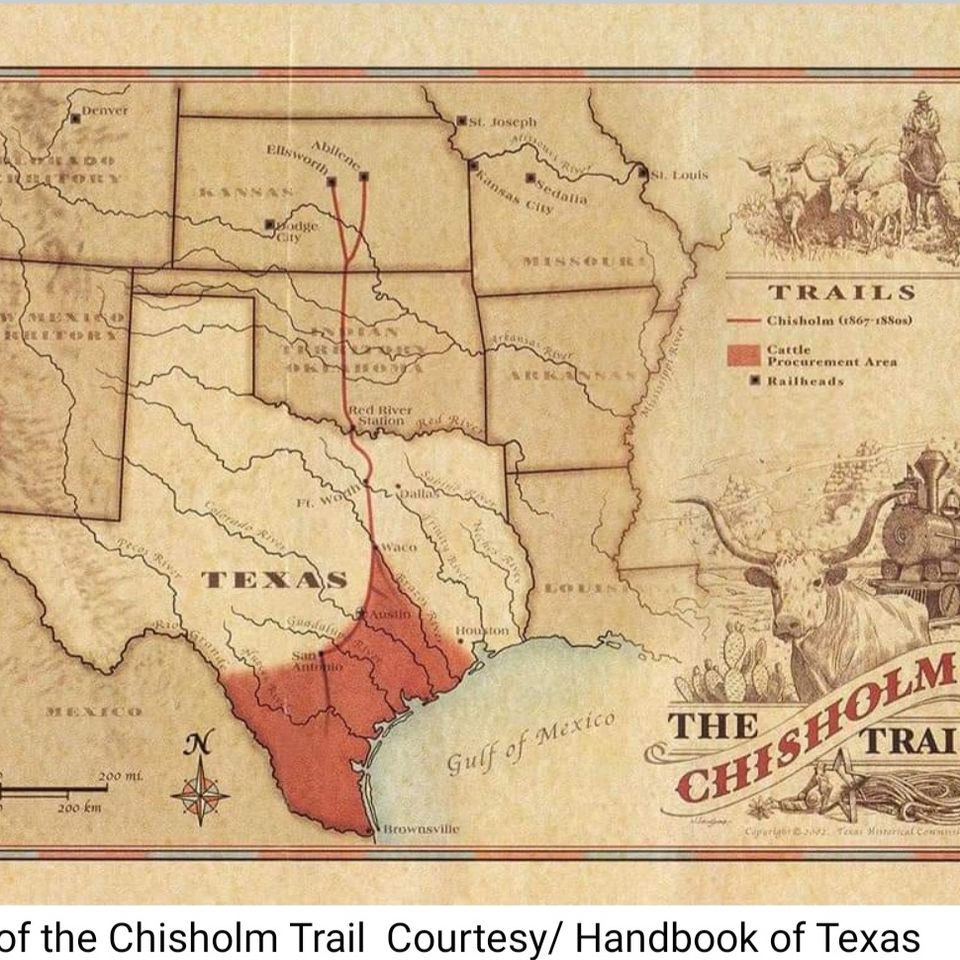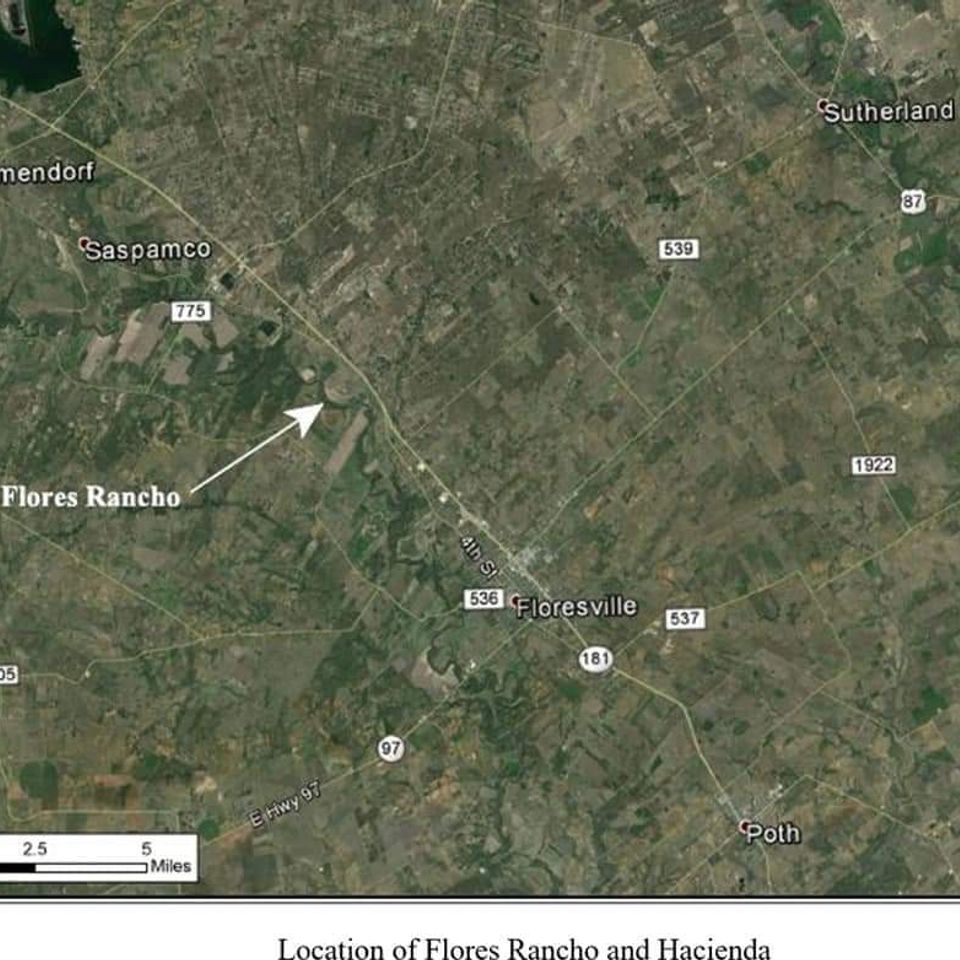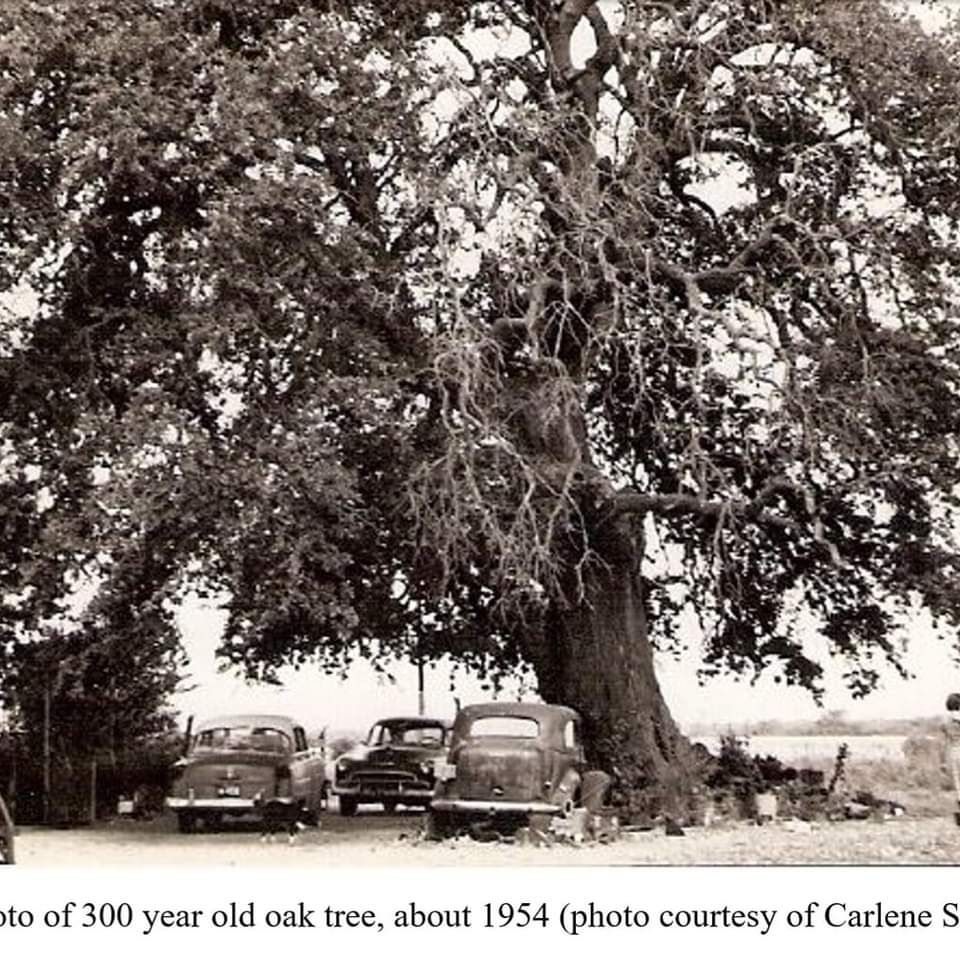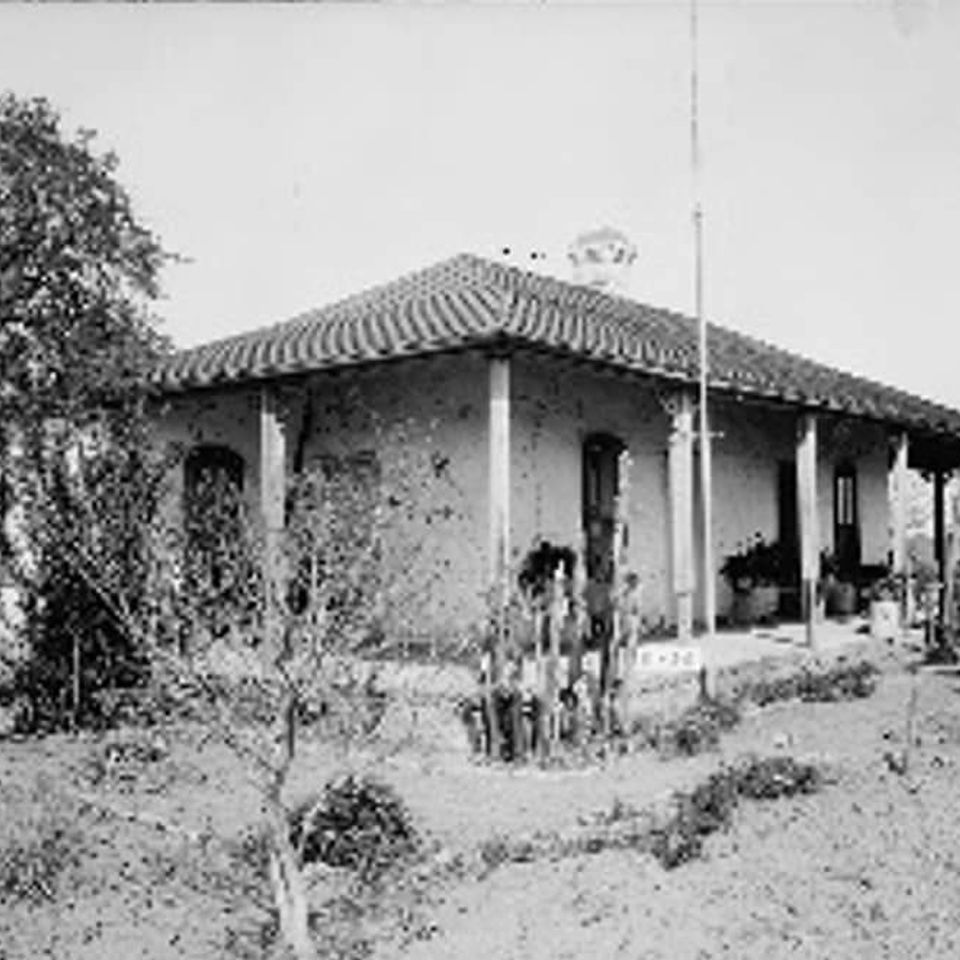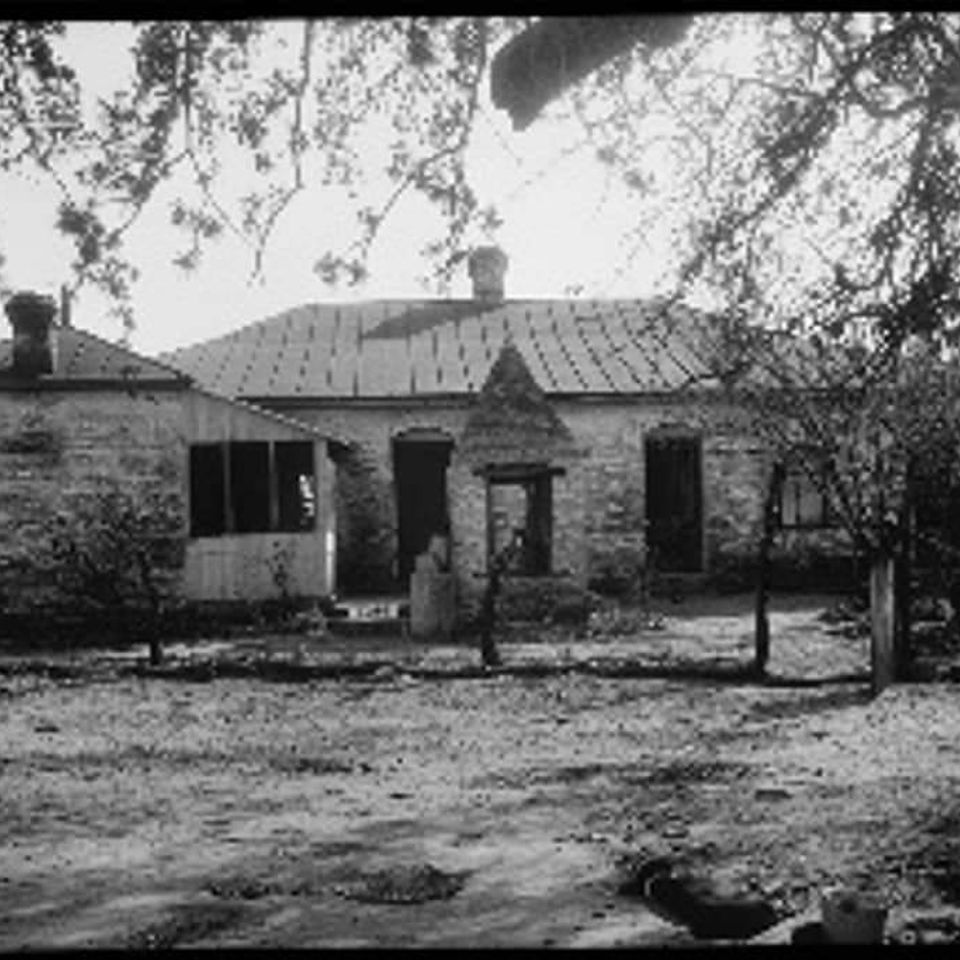By Gregory Ripps
Wilson County News
Oct. 29, 2019
"My branch of the family didn't know the cemetery was there until 2006."
Nancy De La Zerda was referring to the cemetery that bears her family name. She was attending the dedication of a marker commemorating the historical site of Floresville's Lodi Ferry nearby when a distant relative told her about the site.
"It's down the path which runs next to the Lodi Ferry historical marker, at Peach and Goliad," she said. "You go down the path till it branches left at the gate to the Bolf property."
Since 2006, De La Zerda has become much more familiar with the history of her family and the cemetery where many of them are buried.
Many other people may not be aware of where their ancestors are buried, especially if they weren't interred in a national, city, or private "perpetual care" cemetery. Many small family or community cemeteries — in addition to church graveyards — began popping up throughout Texas in the 19th century after swarms of settlers established themselves in the region.
A number of stone markers at the Canary Islanders Cemetery are in bad shape, but this one is among those that are still legible.
A number of stone markers at the Canary Islanders Cemetery are in bad shape, but this one is among those that are still legible.
Property where cemeteries were located changed hands. Industrial or housing development may have made cemeteries hard to access. Many of them were forgotten or abandoned. Even cemeteries whose occupants have claims to a place in history are often neglected.
Wilson County has more than 100 identified private cemeteries. There may be more, whose stone markers have crumbled and been largely reclaimed by nature.
"The one that I feel is terribly neglected is the Canary Islanders cemetery," said Julia Castro, a Floresville history buff and Wilson County News columnist. The cemetery is located on the east side of U.S. 181, north of the Wilson County Justice Center. It is accessible through the parking area between two auto parts stores.
The cemetery was so named because it serves as the final resting place for descendants of some of Texas' earliest settlers, who migrated from the Canary Islands. However, others are buried there, too.
Shirley Grammer shares a story about her research into a family buried in one of Wilson County's more than 100 private cemeteries. The Grammer home has an entire room dedicated to maintaining her research on cemeteries and local history.
Shirley Grammer shares a story about her research into a family buried in one of Wilson County's more than 100 private cemeteries. The Grammer home has an entire room dedicated to maintaining her research on cemeteries and local history.
Recently, this cemetery received some needed attention. Brothers Juan and Bob Ramirez went there Sept. 13 to visit the grave of their great-grandmother, Amelia Cardenas, who was of Spanish descent.
"I wondered if we'd be able to get out there with everything so overgrown," Juan said. Instead, the brothers found a man with a machete and clippers tackling the overgrowth.
The man turned out to be H.L. "Hank" Whitman Jr., a retired Chief Texas Ranger and Wilson County resident.
"There's a Texas Ranger and San Antonio mayor buried here," Whitman pointed out, referring to P.L. Buquor, but he gave just as much attention to the other burial spots. "I think it's real sad when people let a cemetery go down."
After identifying the graves and clearing the area around the grave markers, Whitman returned a few days later with a front-end loader equipped with a mower to clear the open areas of the cemetery. He didn't want to make anything of his arduous task.
"I asked myself, 'Why is no one taking care of it?'" Whitman said. "So I just adopted the cemetery and will take care of it."
Other Wilson County residents have taken on the cleanup and restoration of cemeteries long term.
Shirley and John Grammar have been involved with cemeteries since they moved to the La Vernia area 30 years ago.
"I needed a hobby," she explained.
Her first effort was to investigate the graves of the Applewhite family, early settlers of the area, near the funeral home in La Vernia. This led her to the Concrete Cemetery, located near La Vernia, but in Guadalupe County, and the Doisedo Colony Cemetery, southwest of La Vernia, where other Applewhites were buried.
The pattern has repeated itself: The Grammers, sometimes with other volunteers, find a cemetery "in terrible shape" and not only clean it up, but also photograph and document every stone or metal marker they find there.
Shirley has taken additional steps:
•Researching the people buried in a cemetery, building family trees, and locating descendants
•Applying to the Texas Historical Commission for a historic designation for any cemetery she helps to rehabilitate. In a number of instances, this is followed by the erection of a historical marker, additional recognition, and, hopefully, a reason for relatives of cemetery occupants to attend a dedication ceremony.
•Encouraging the formation of an association to maintain a restored cemetery and keeping it from again falling into neglect. Such associations may include family members, members of a church with a connection to a cemetery, or other interested individuals.
•Building up a network of historians, historical associations, and genealogists.
While some enthusiasts have come and gone, Shirley has stuck with it.
"I have files on every cemetery in the county," she said. "One of these days, when I get tired of this, I'll give it all to the Wilson County archives."
De La Zerda, for one, is determined not to let her family cemetery be neglected. She is grateful for the groundwork others have done, singling out local historian Maurine Liles for an inventory of the cemetery and a brief history of the occupants.
"She has been the cemetery's champion," De La Zerda said. "I personally think she's an angel."
De La Zerda looks forward to the dedication of a new cemetery marker, which will be located near the Lodi Ferry historical marker, rather than in the cemetery itself. She also has been developing ideas to raise funds to improve and maintain the graveyard.
"It's not close to where we can say that people can come and visit," she said.
MARKER REDEDICATION
A new historical marker for the De La Zerda Cemetery will be dedicated Saturday, Nov. 2, in a 2 p.m. ceremony.
Someone apparently took target practice with the marker placed in the cemetery. The new marker will be placed next to the Lodi Ferry marker near the intersection of Peach Street and Goliad Road in Floresville.
HISTORIC CEMETERY DESIGNATION
The Texas Historical Commission offers Historic Texas Cemetery designation for family and community graveyards to help protect them.
This designation:
•Records the cemetery's location and boundaries in county deed records
•Alerts present and future landowners of any cemetery presence on their property
•Documents the cemetery's current condition
•Fills one prerequisite for applying for an official Texas historical marker for the cemetery.
A Historic Texas Cemetery designation imposes no restrictions on private owners' use of the land adjacent to the cemetery.
Any individual or organization may submit a request for the designation by accessing the necessary instructions and form through the Texas Historical Commission's website at
www.thc.texas.gov.
Nancy De La Zerda added to the Wilson County News article:
Thank you for this great, timely article, Mr. Ripps, and for your interest in maintaining our histories. I am so thankful to people like Shirley Grammer, Mr. H.L. Hank Whitman Jr., Maurine Liles, and everyone at the Wilson County Historical Society for identifying, researching, and working so dilgently to help preserve Wilson County historical cemeteries. I have been so moved by the tremendous responses and assistance from the City of Floresville, the Floresville Economic Development Council, and by the property owners neighboring the De La Zerda cemetery, Mr. Danny Bolf and Mr. Rayford Johnson, and by Richard Kalak who tends to their properties, as we've prepared for the Nov. 2nd De La Zerda Cemetery Texas State Historical Landmark Rededication Ceremony. Everyone has graciously stepped up and come together to help prepare the Cemetery for a new future.
I believe strongly that Floresville's history will play a key role in its future. The recent World Heritage Landmark status bestowed upon el Rancho de las Cabras as an extension of the National Park Missions Trail will bring more and more visitors who love history to Wilson County. Over 2.5 million people visit the Alamo each year, while 1.2 million, visited the sites along the Mission Trail in 2018. A total of $87.5 million was spent just in businesses along that corridor. Floresville is now part of that historical National Park Mission Trail. Sites like the fascinating Jailhouse Museum, the beautiful County Courthouse, the historic and "haunted" Fluff's White House Café, the Canary Islanders Cemetery, and all other historical cemeteries in the area, in addition to Rancho de las Cabras and the El Camino de Tejas trail will surely provide visitors glimpses into the rich history of Floresville and Wilson County as well as providing fun ways to explore history.
I believe every school in San Antonio should include the history of Floresville in its curriculum, and vice versa for Floresville. Our cities' histories are so very much connected. The stories of Rancho de las Cabras and the early settlers of Canary Islander descent, the Lodi settlement, the Courthouse debaucles, the founding of Wilson County and Floresville are fascinating. I have learned so much, and am excited for the world to know how important our ties are. I want everyone to know about the legendary Doña María de Calvillo. She's a perfect 21st century super hero! Move over Frida Kahlo. Floresville has a Tejana super hero to share with the world!
******************************************
COURTESY /Wilson County News
